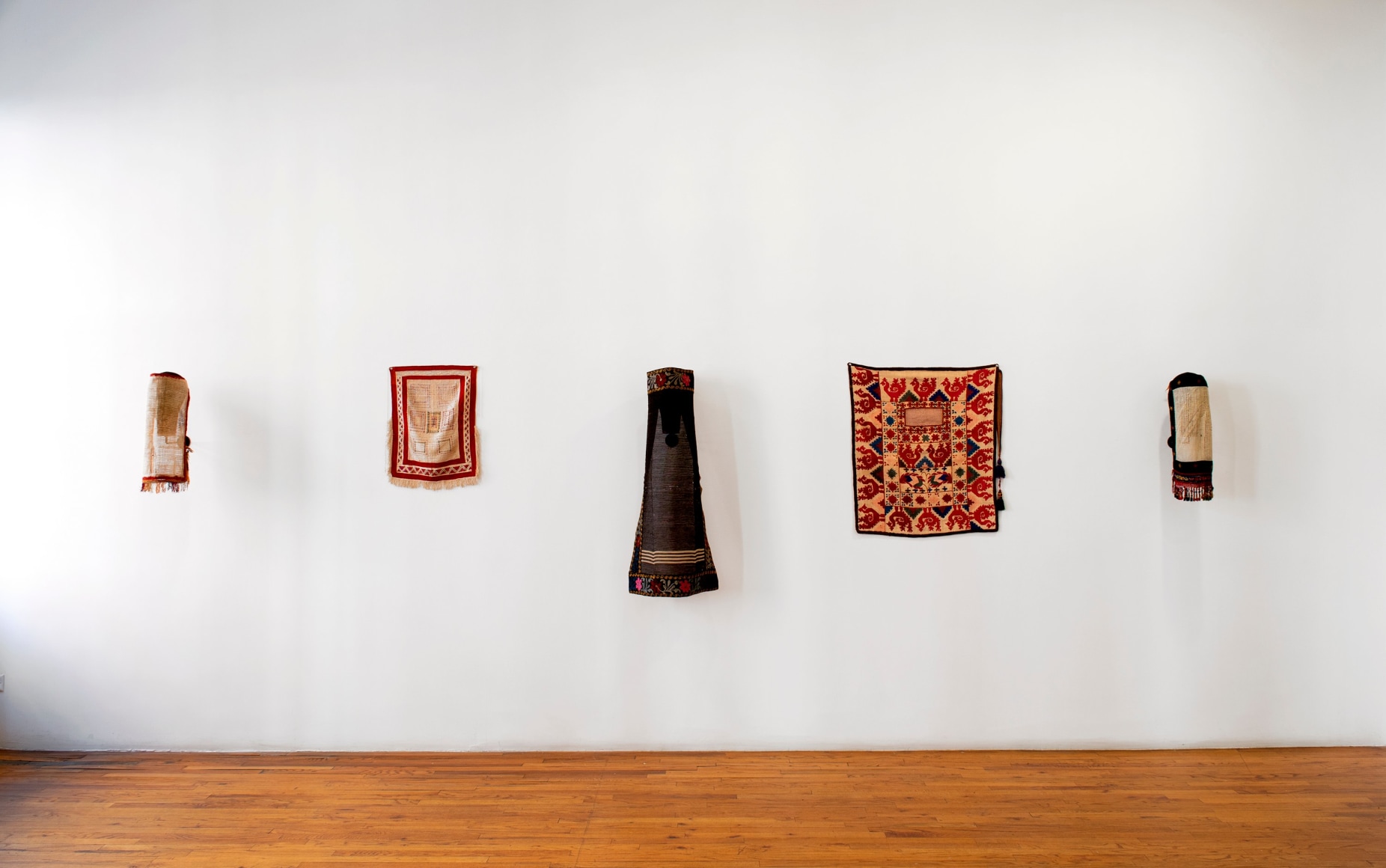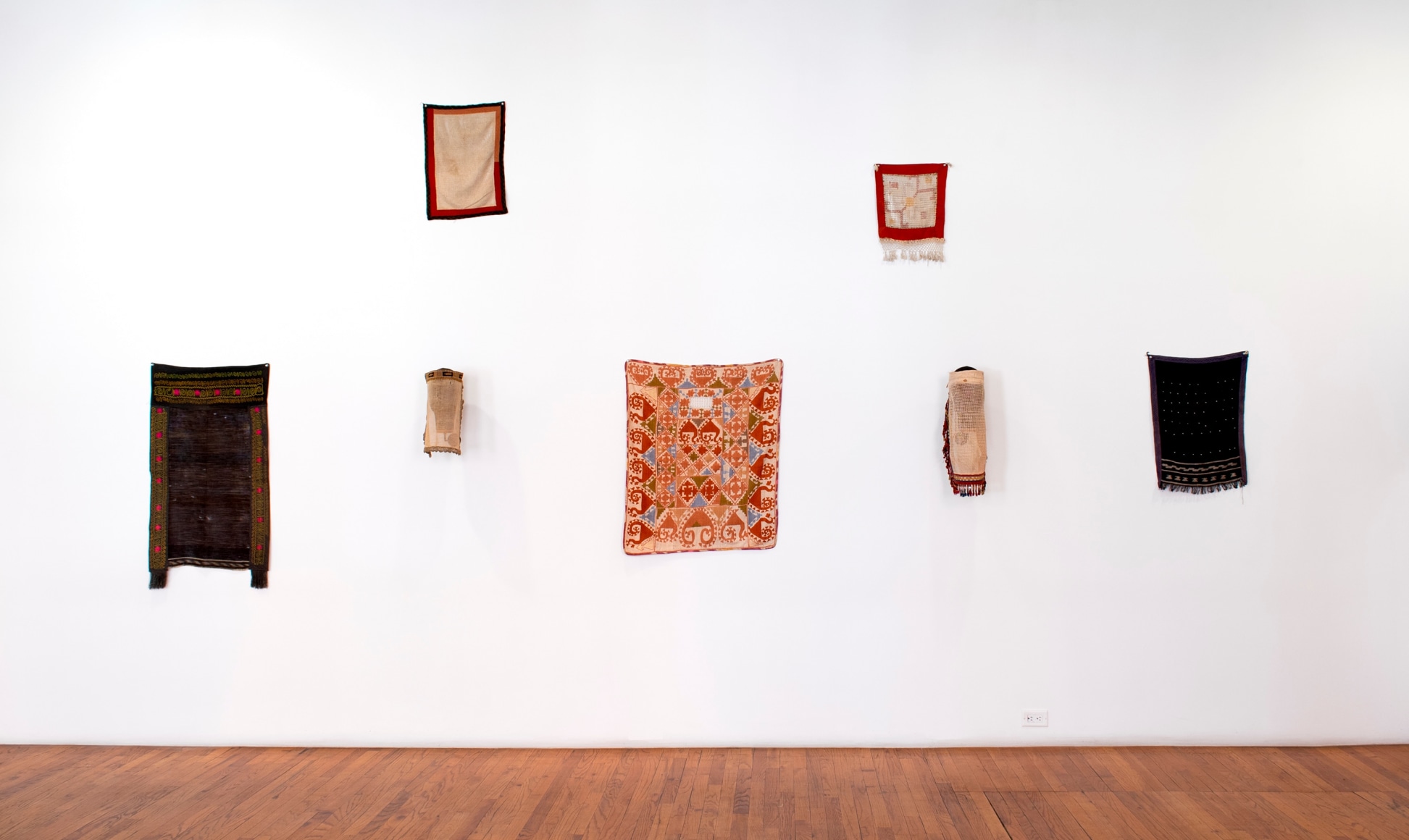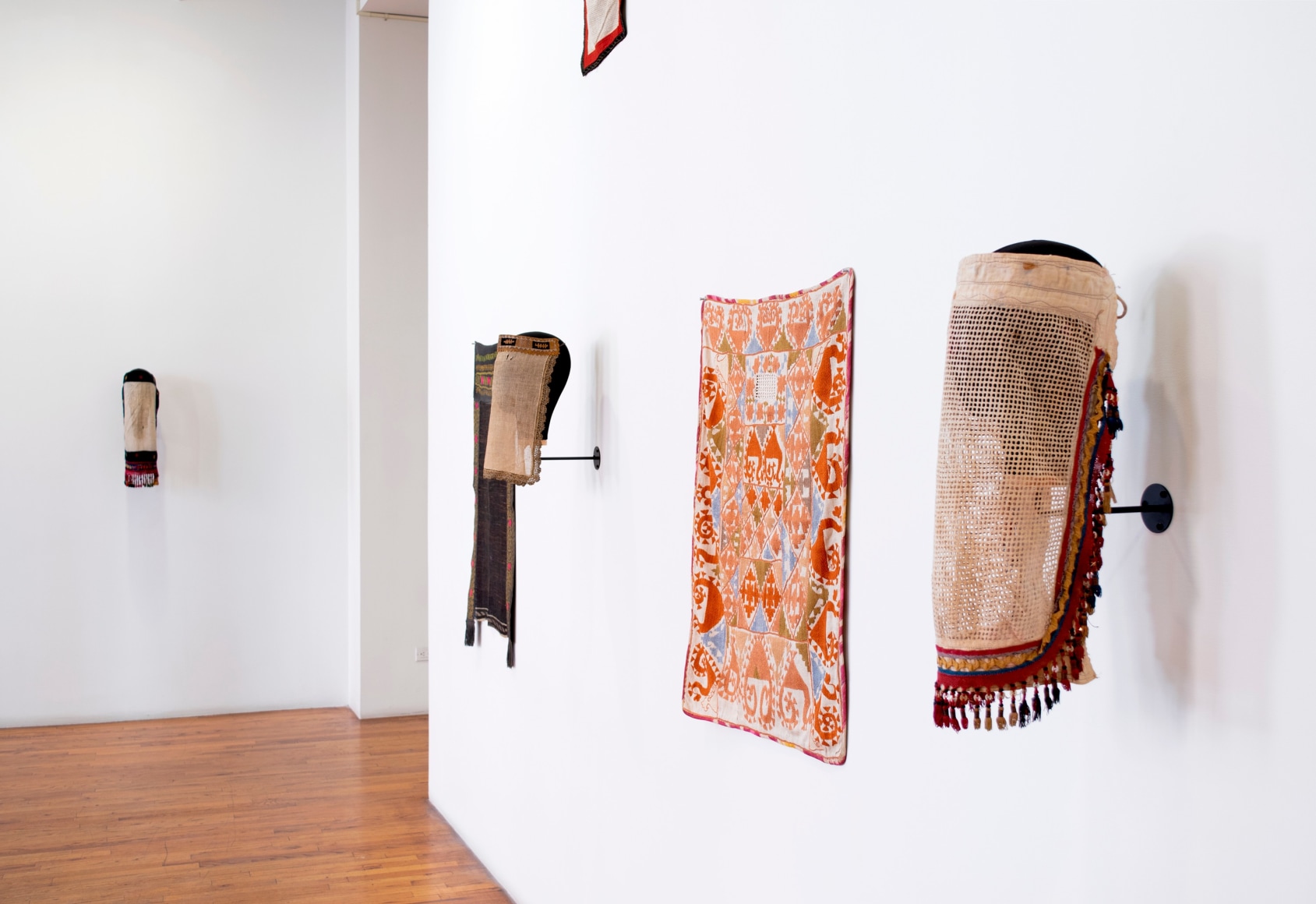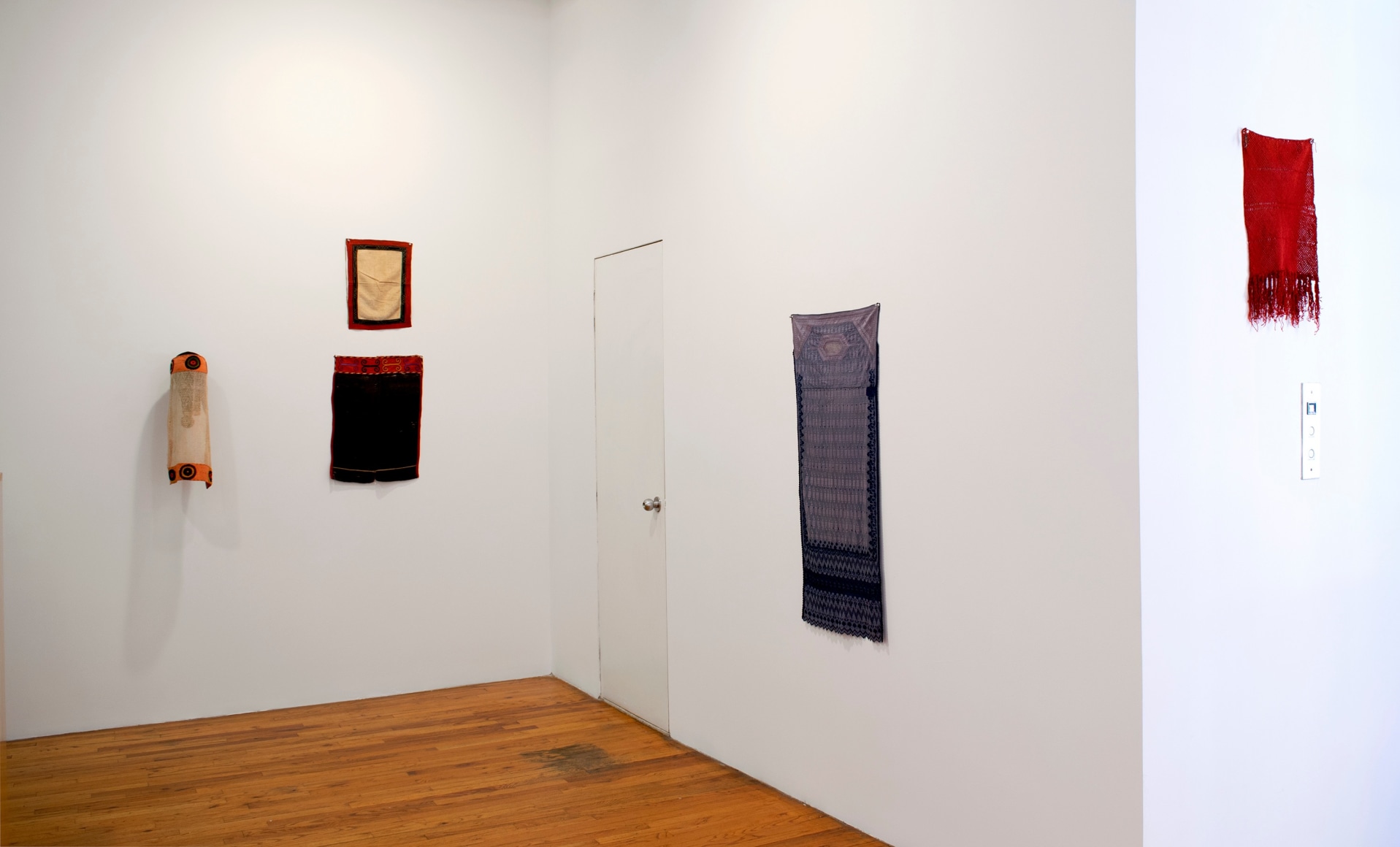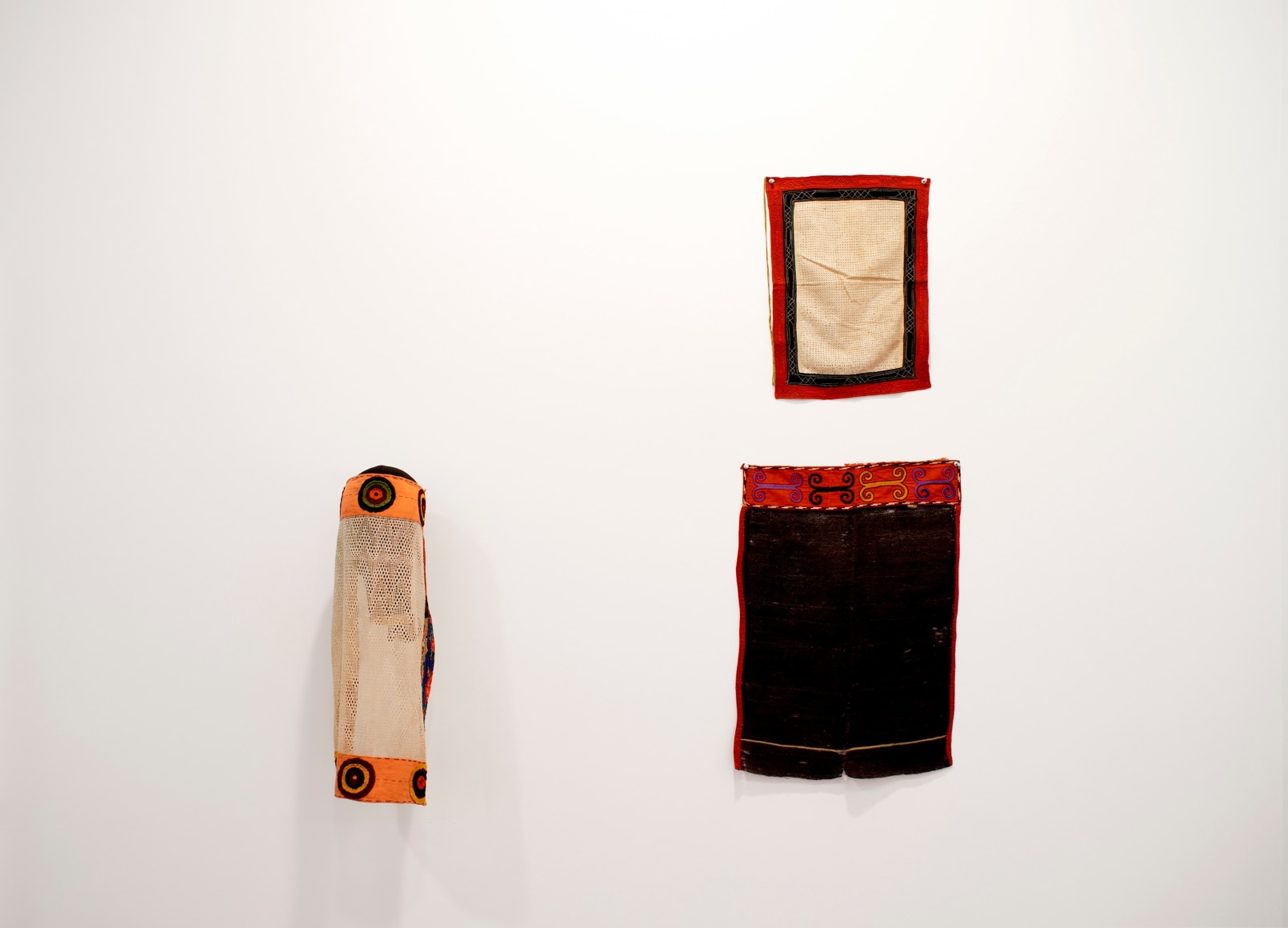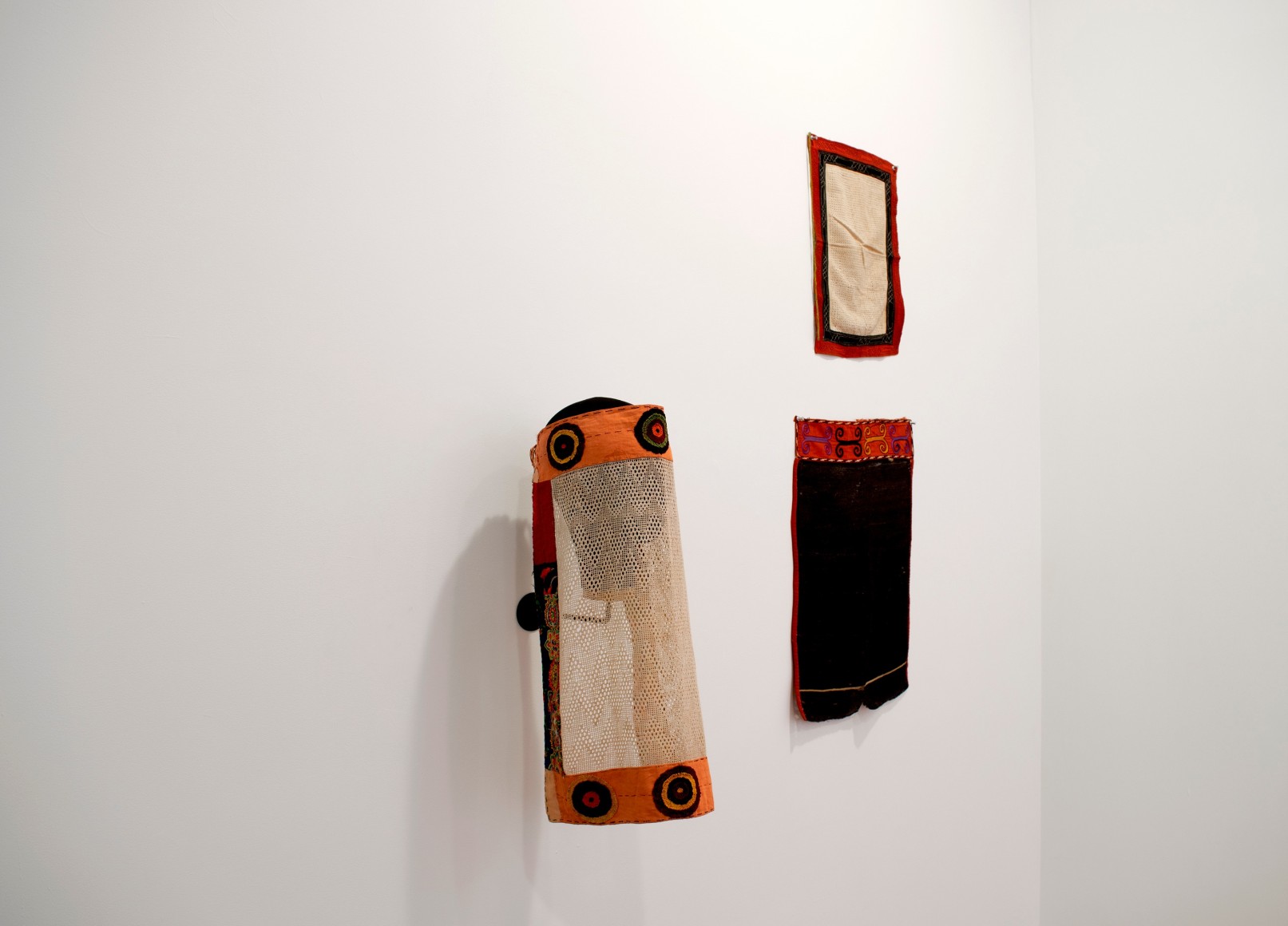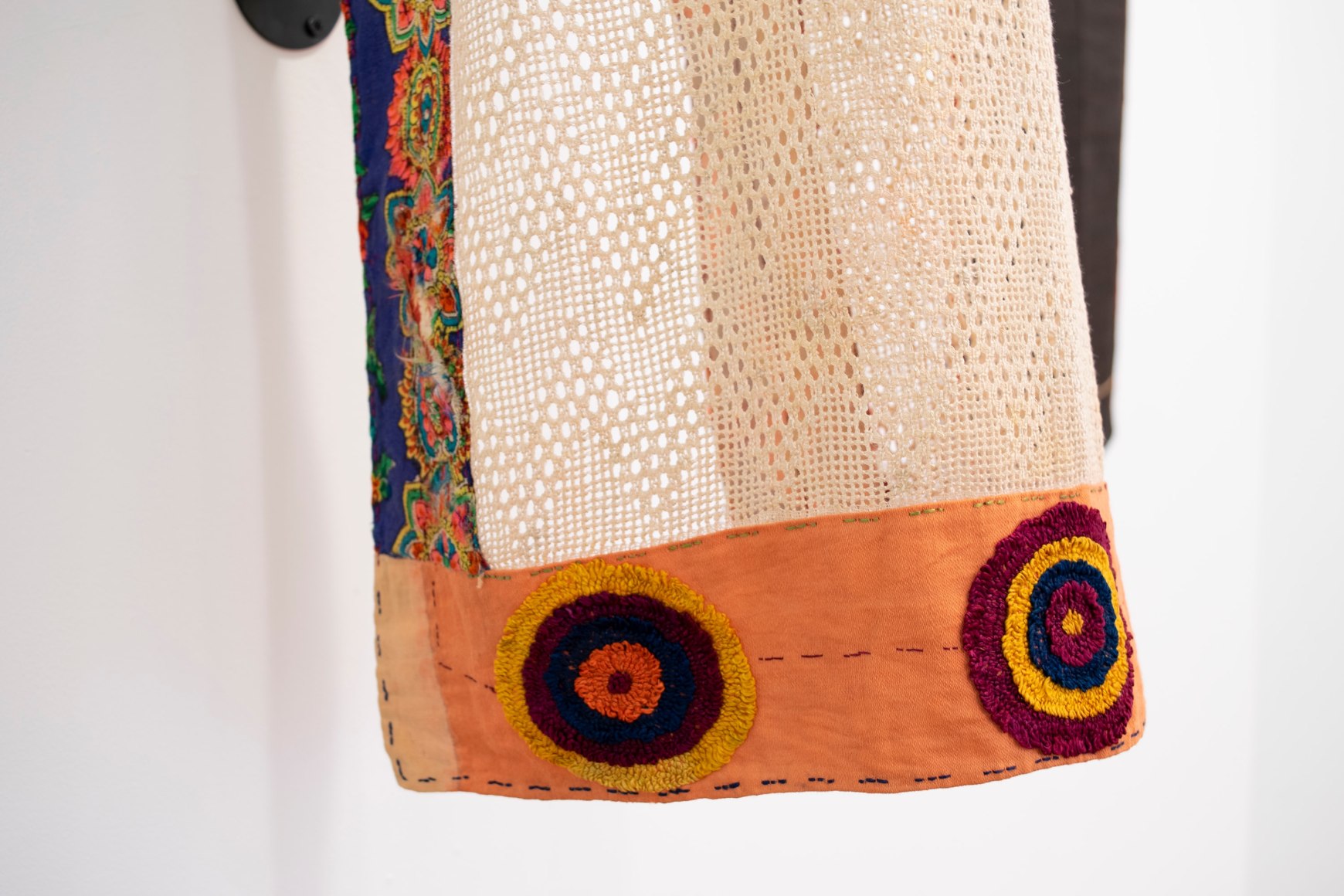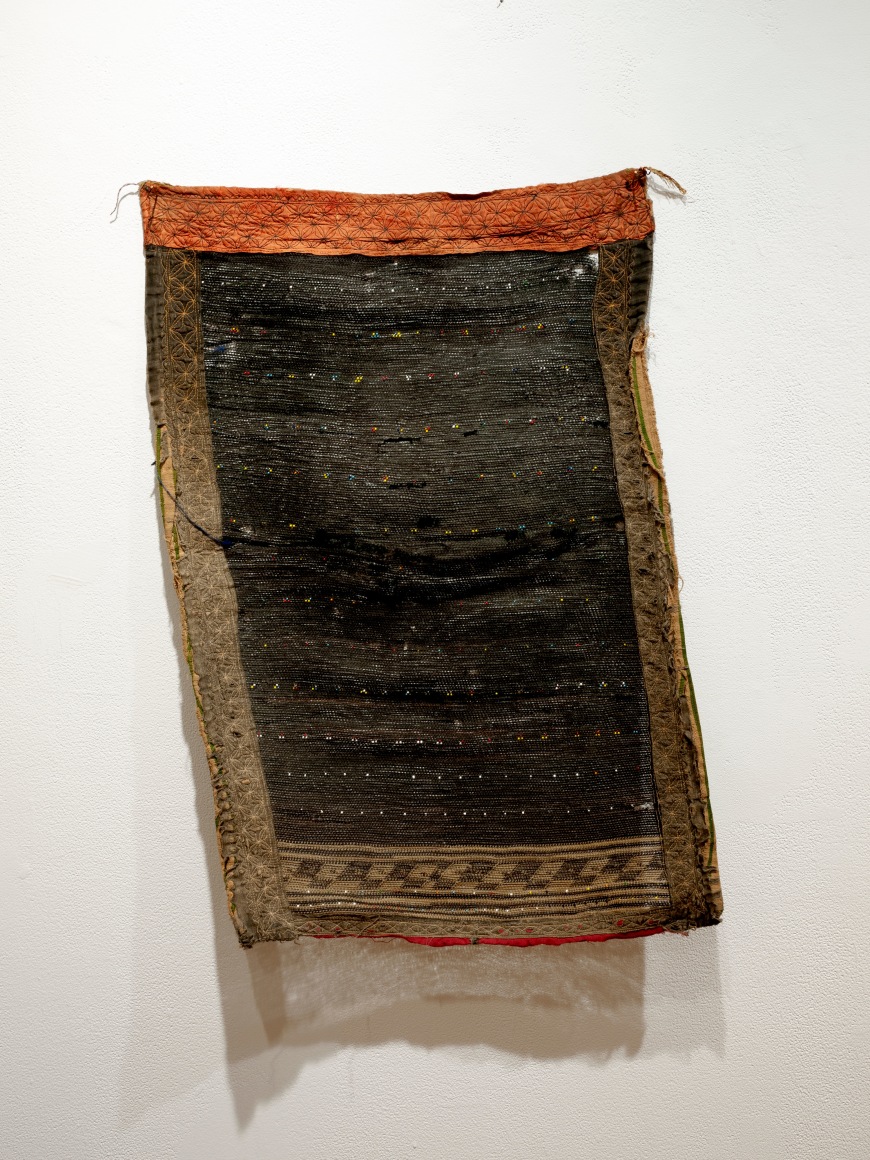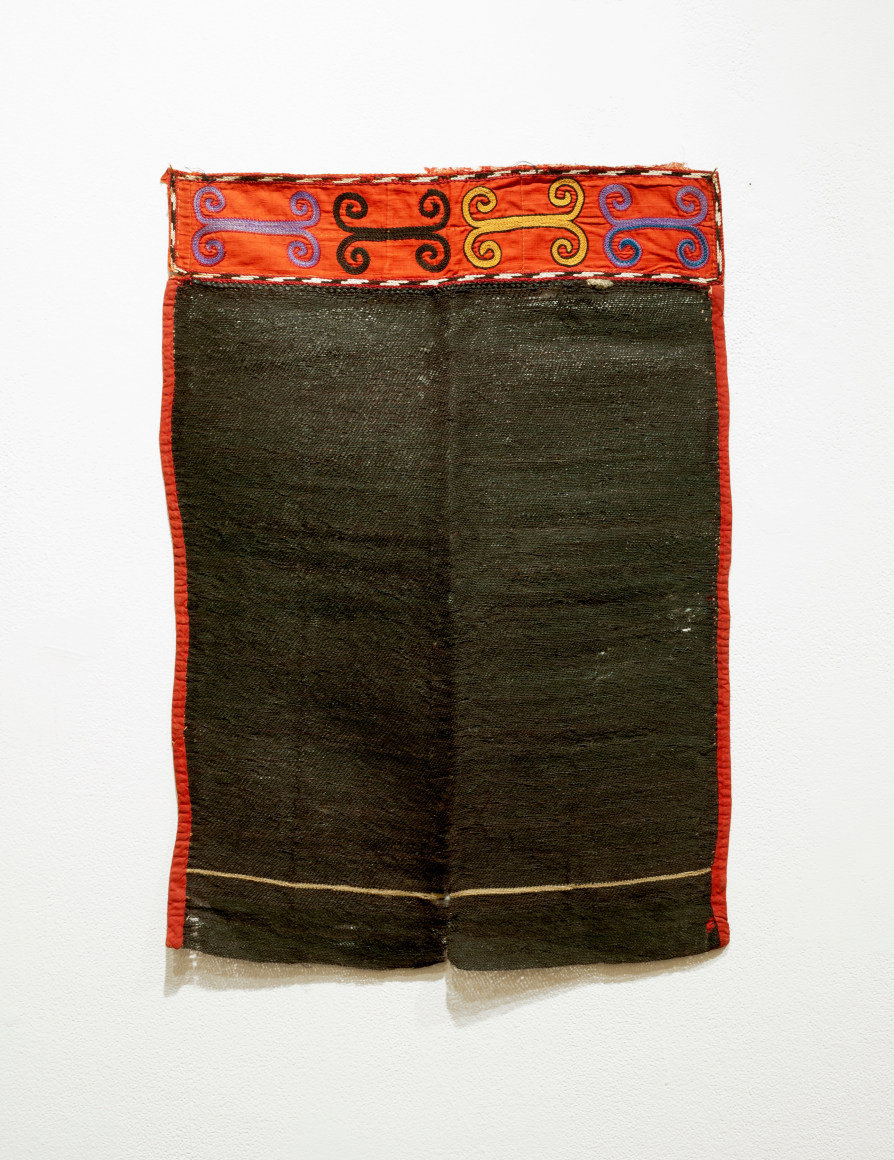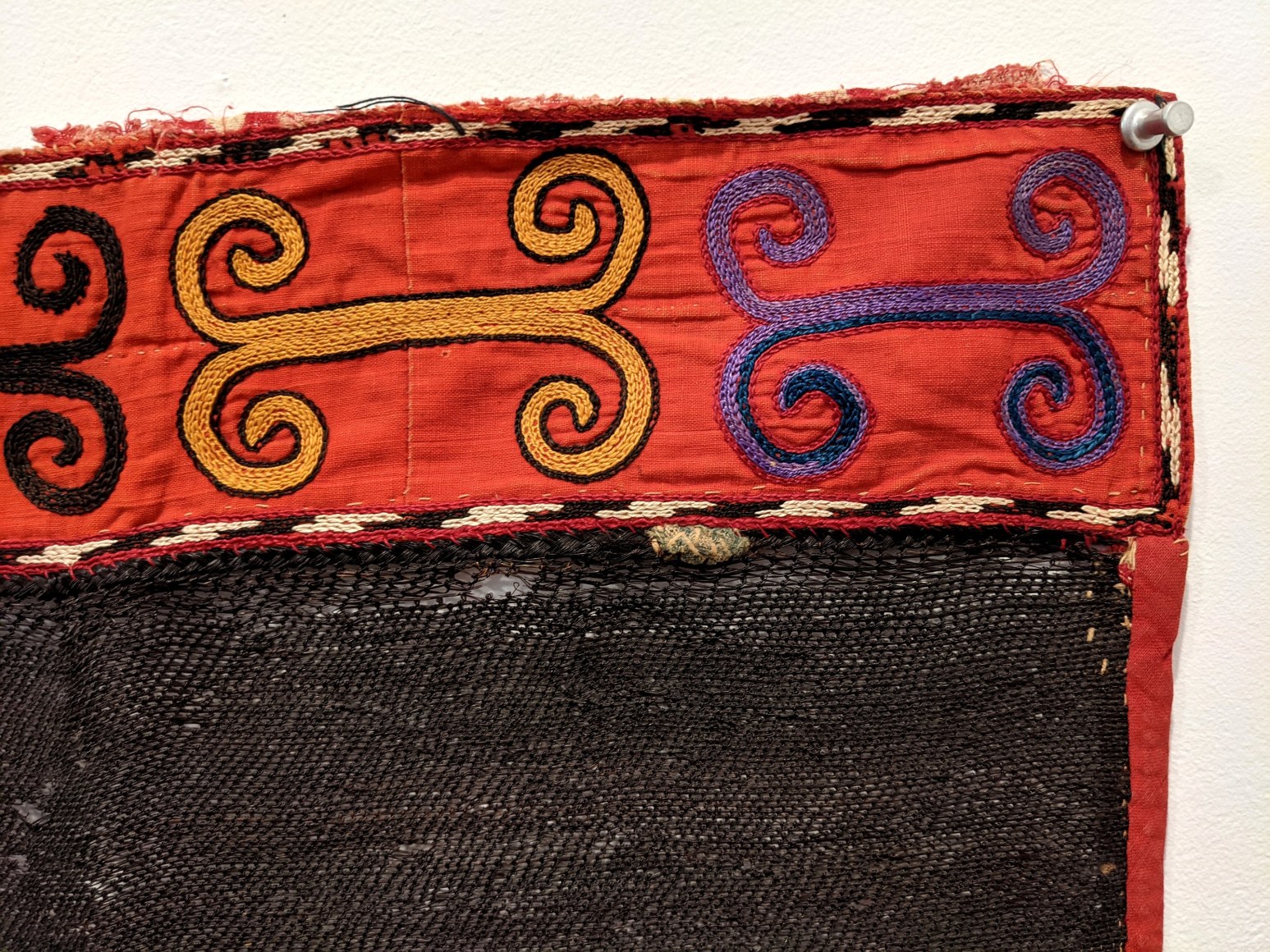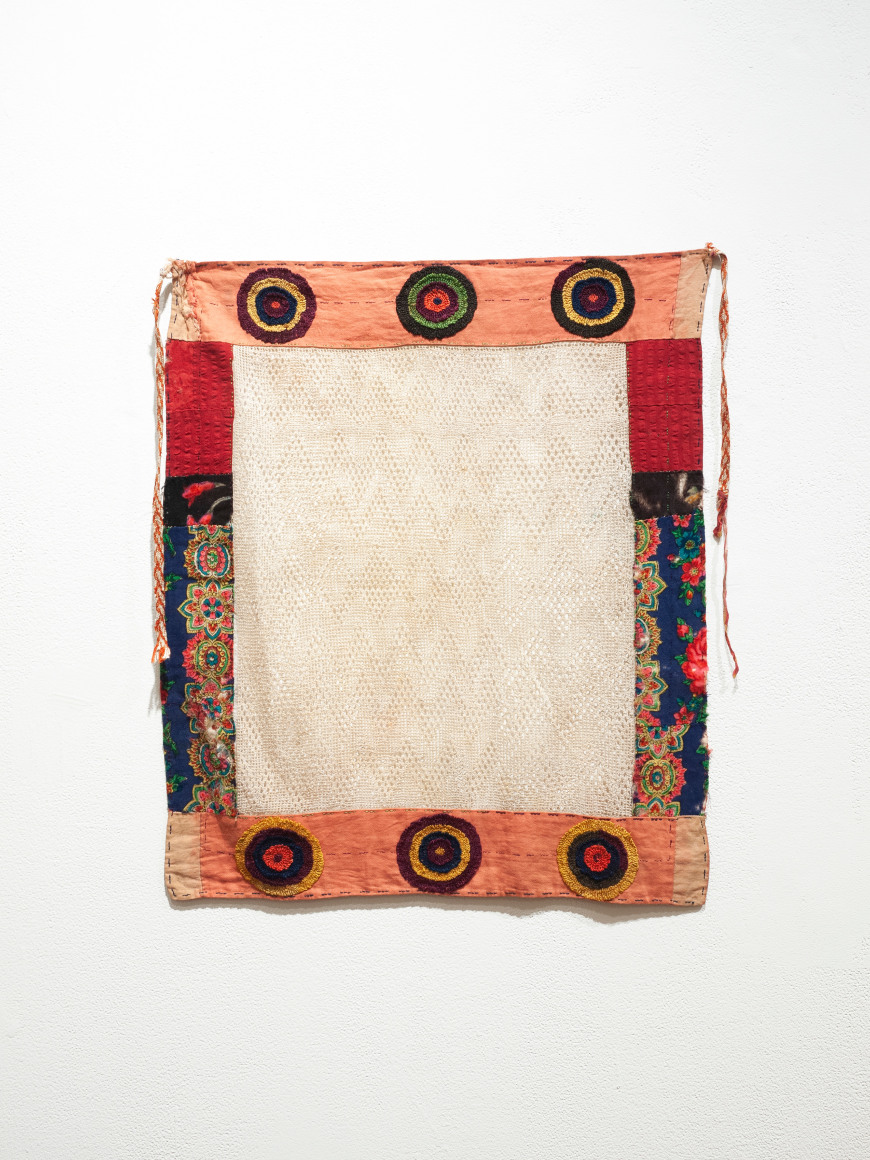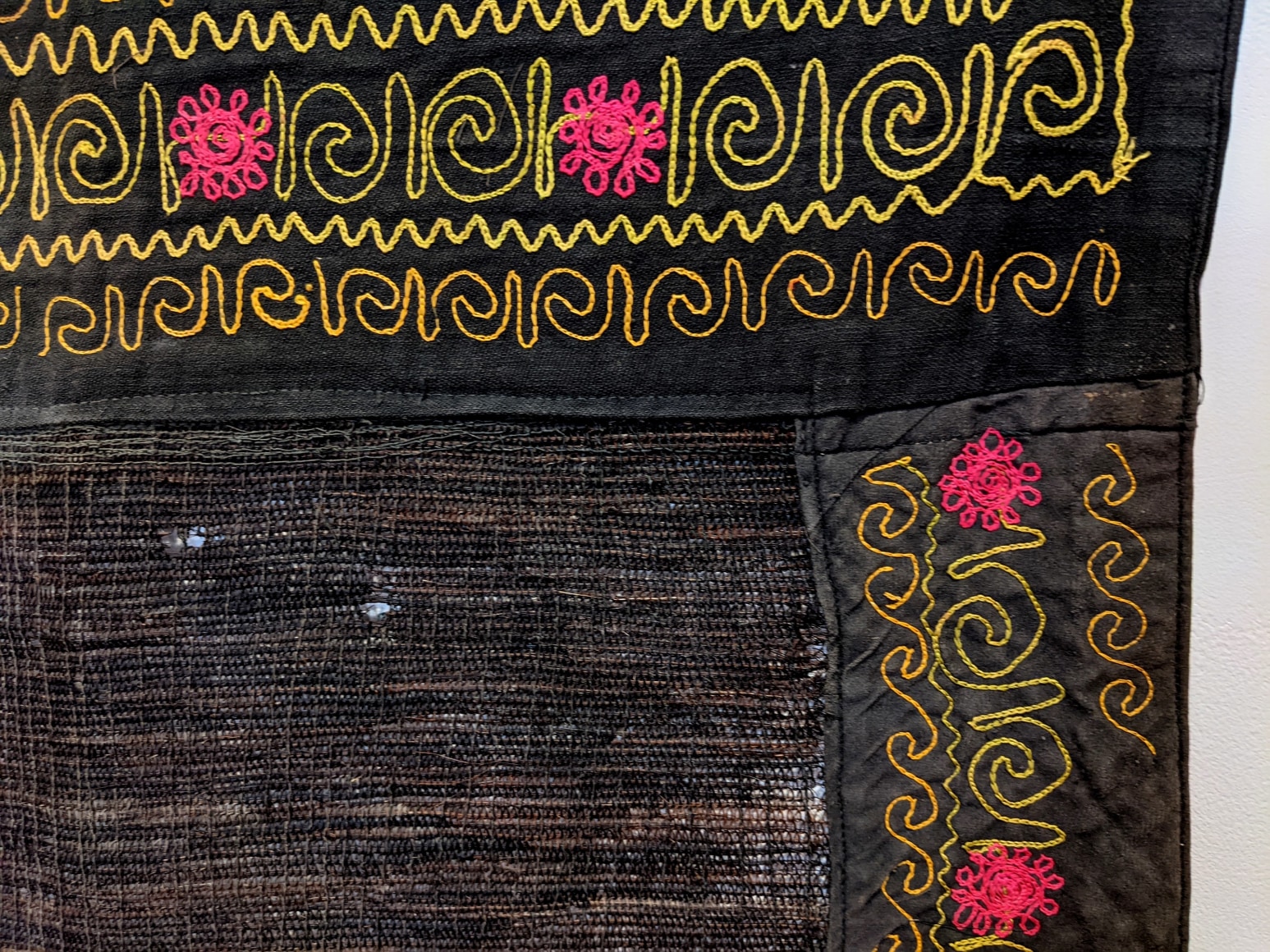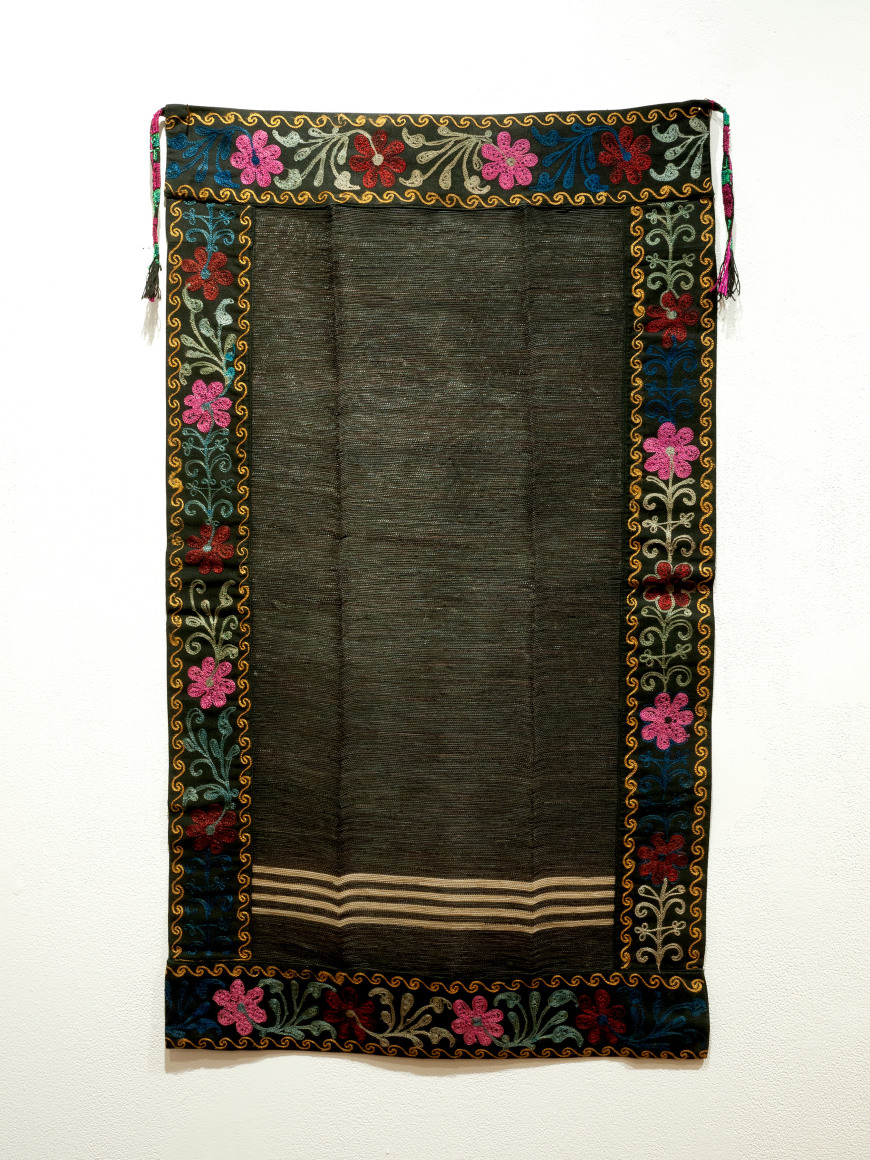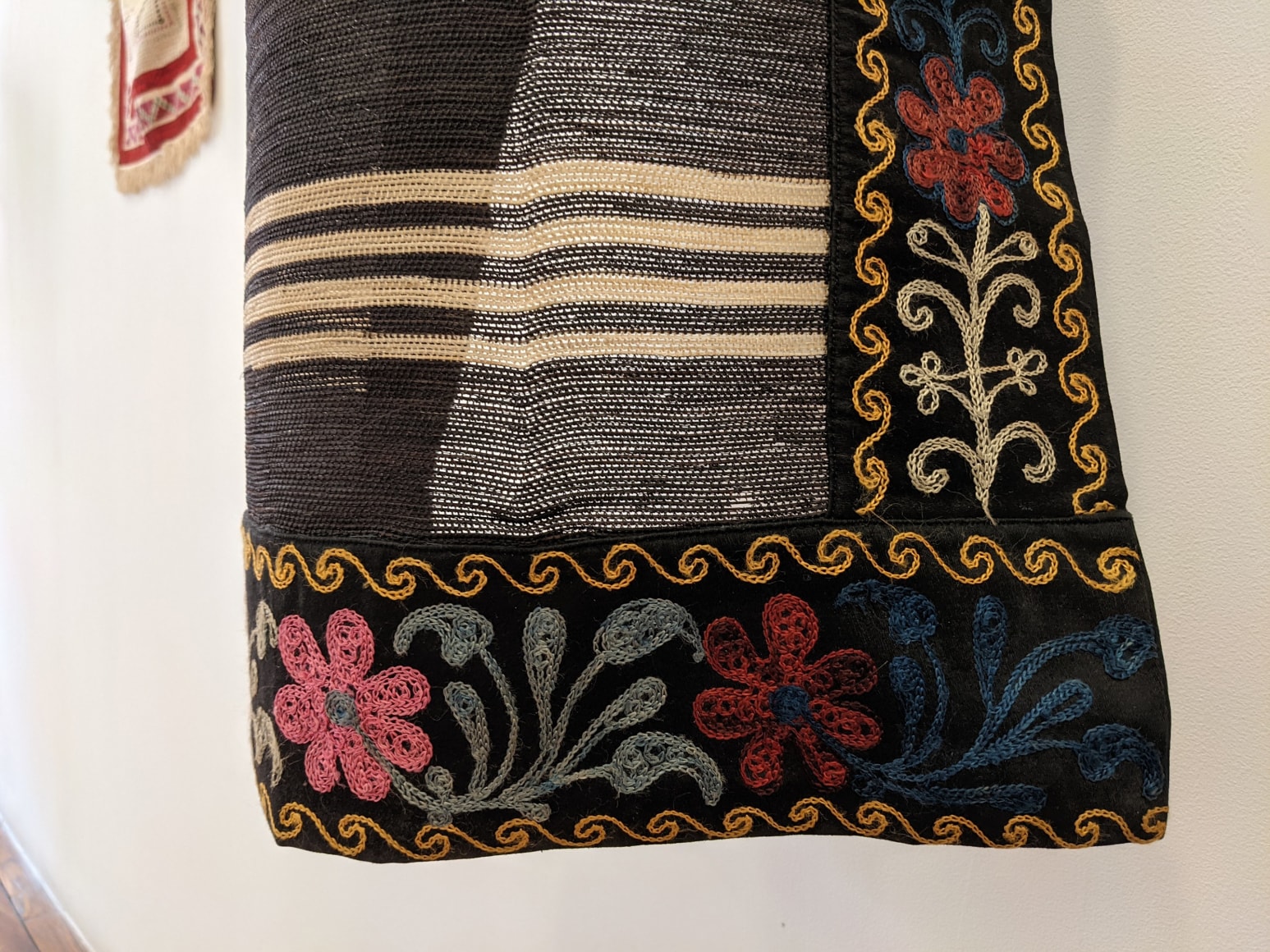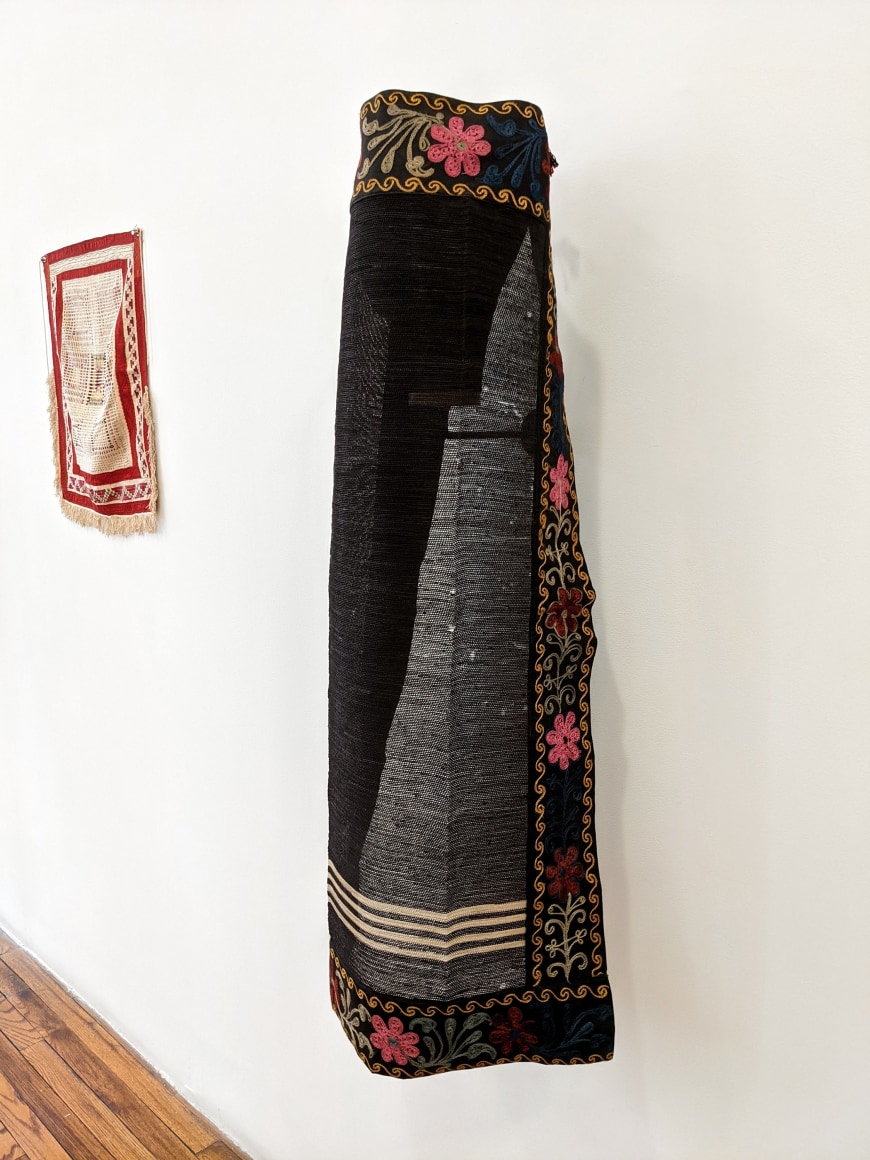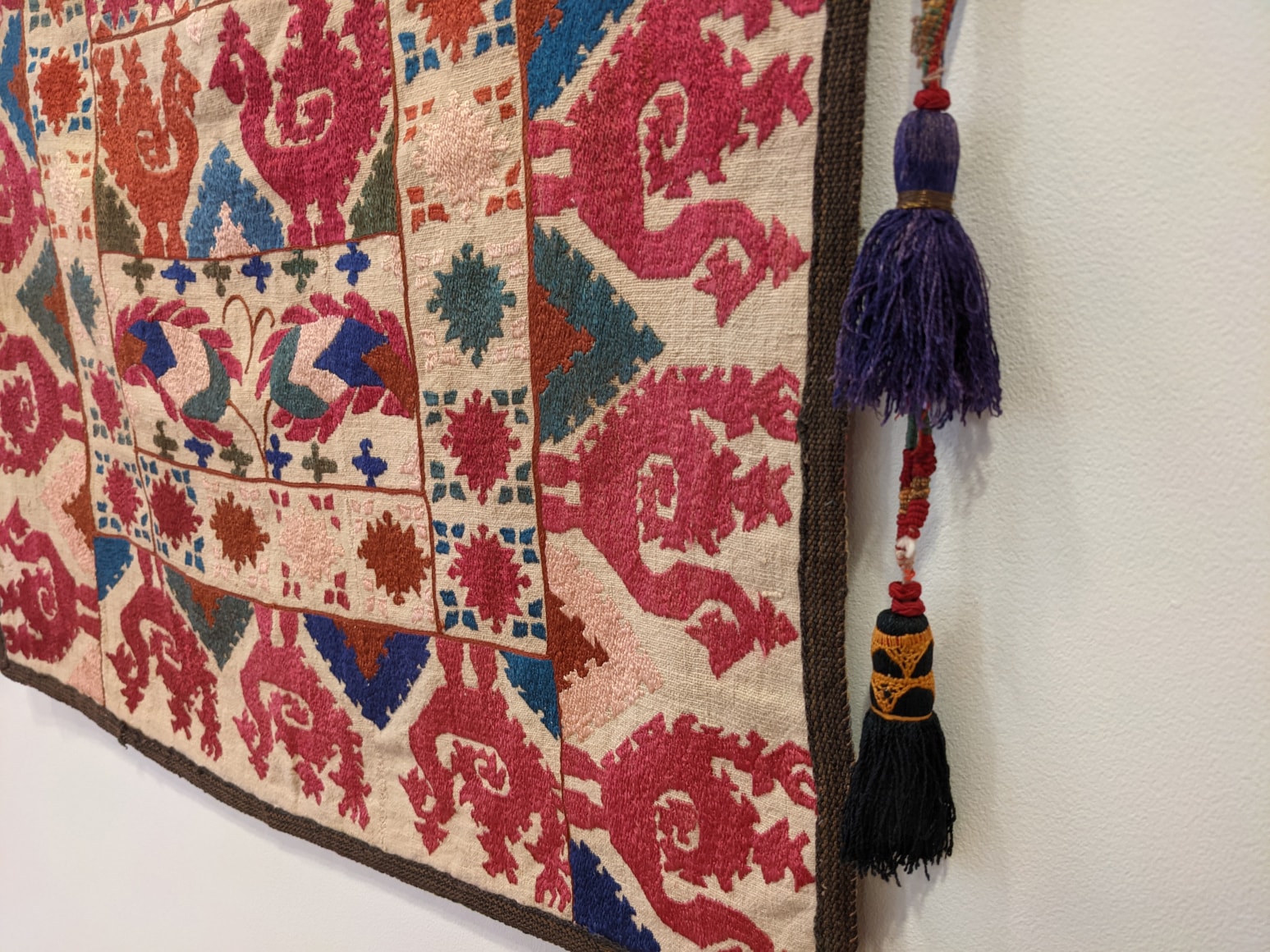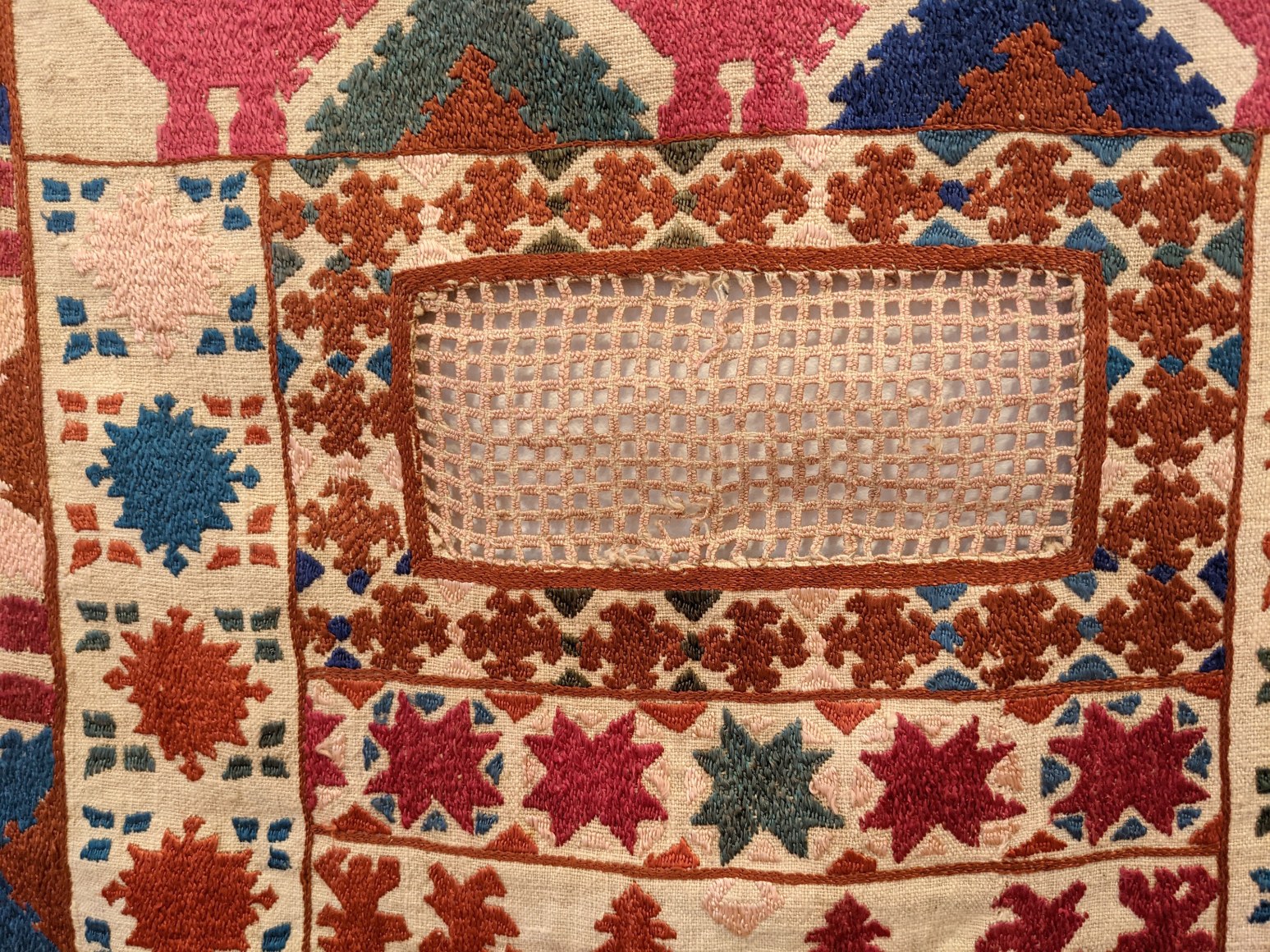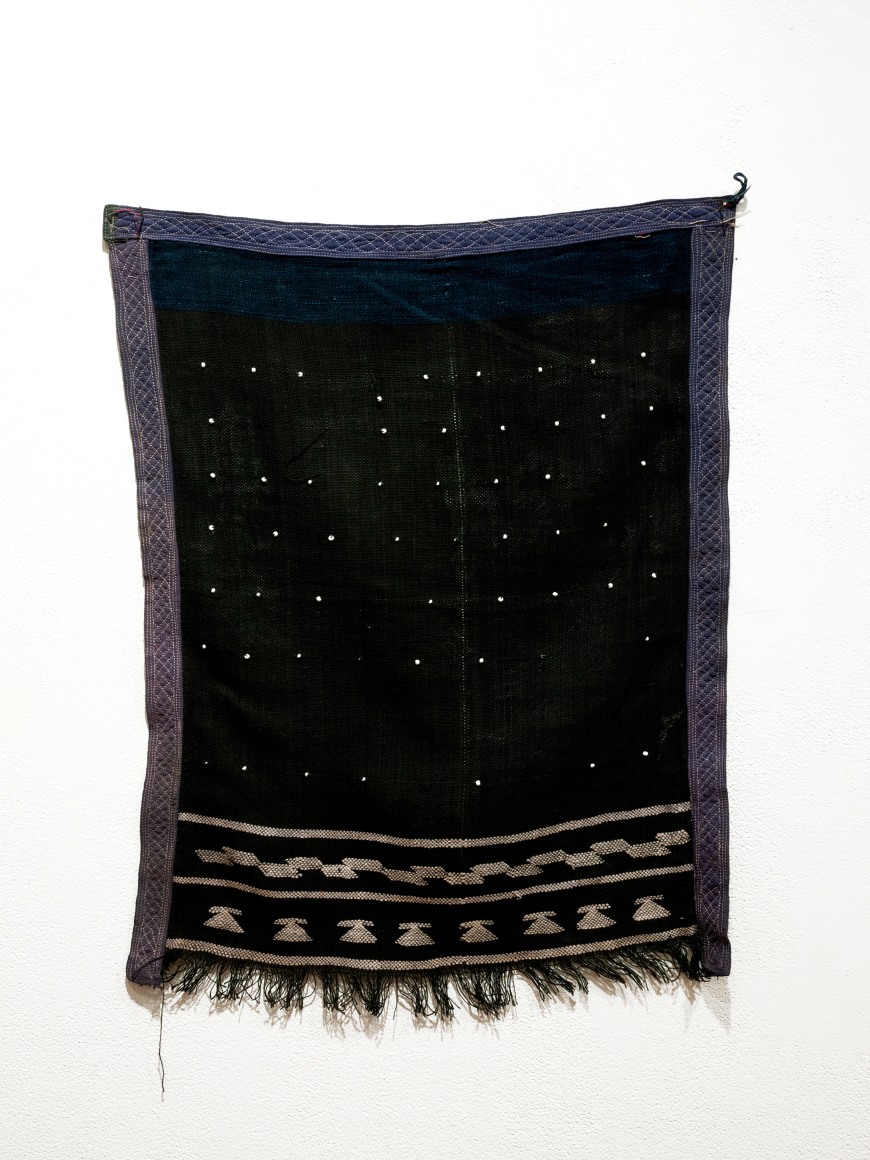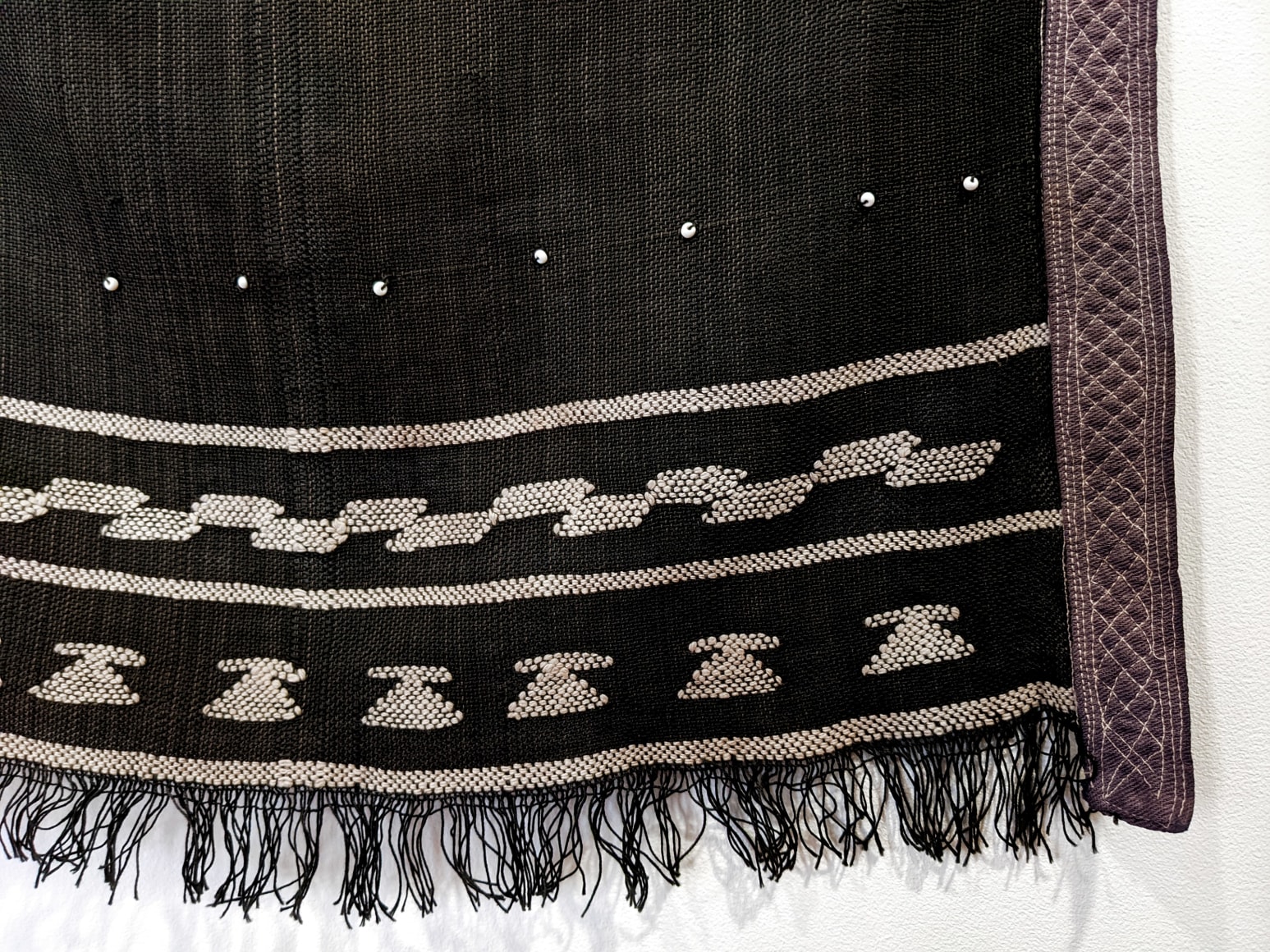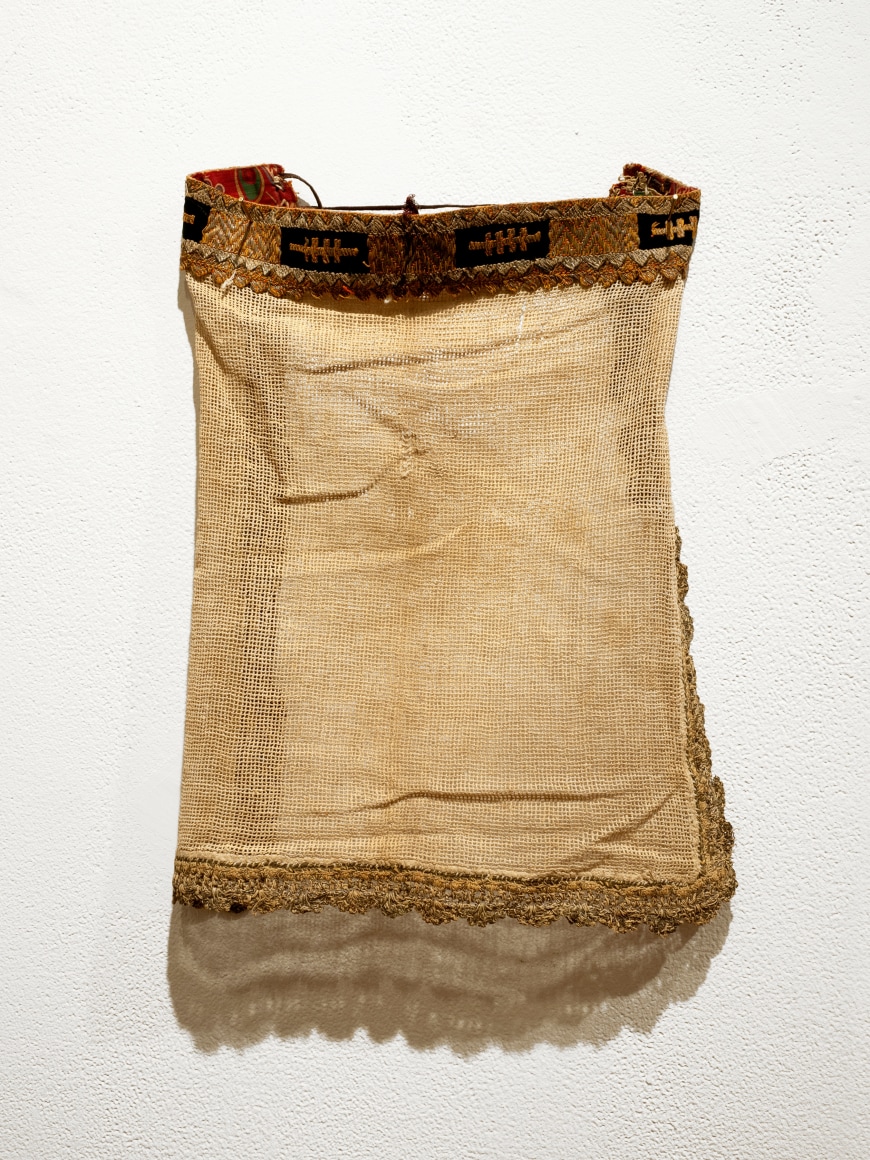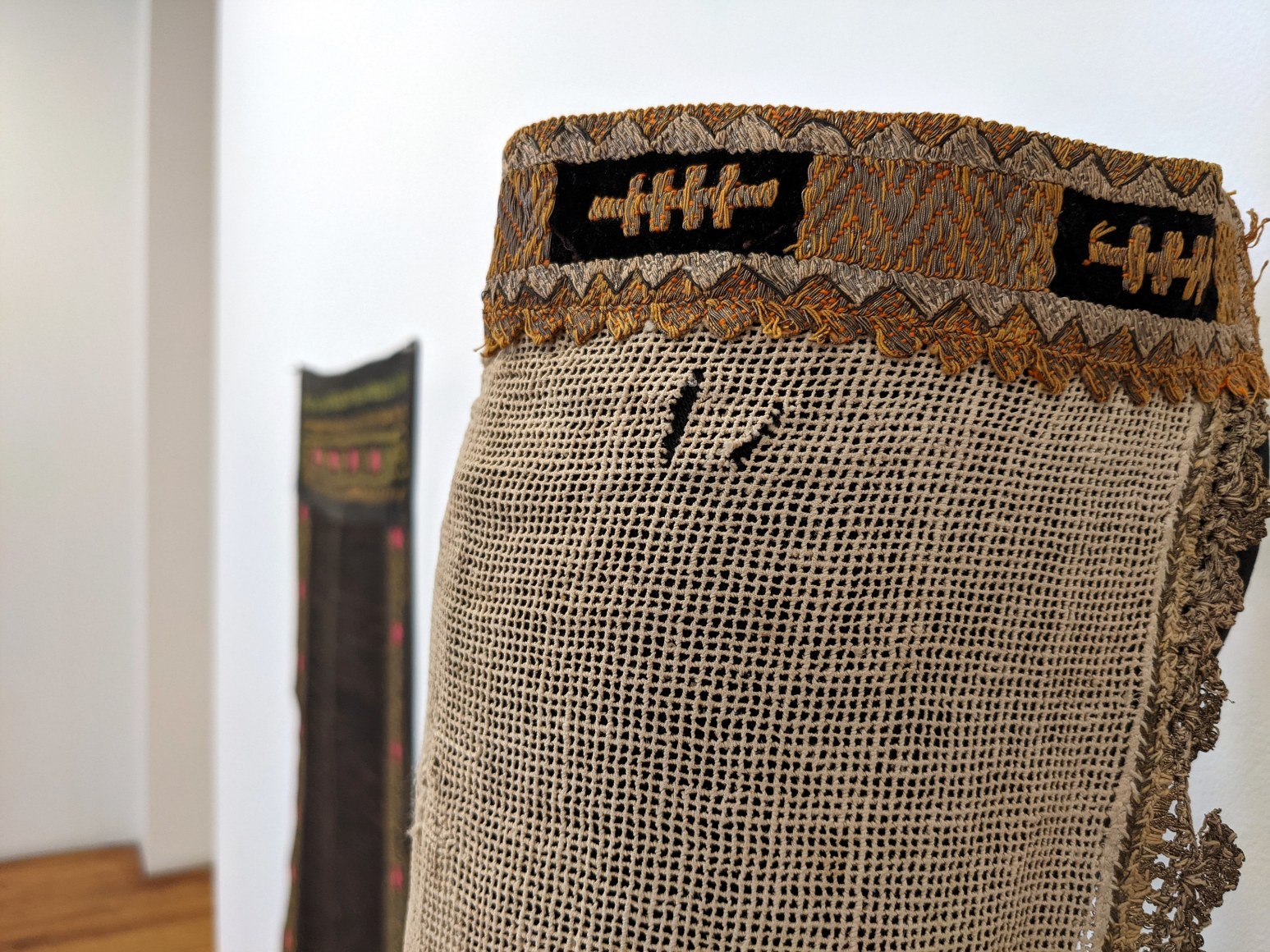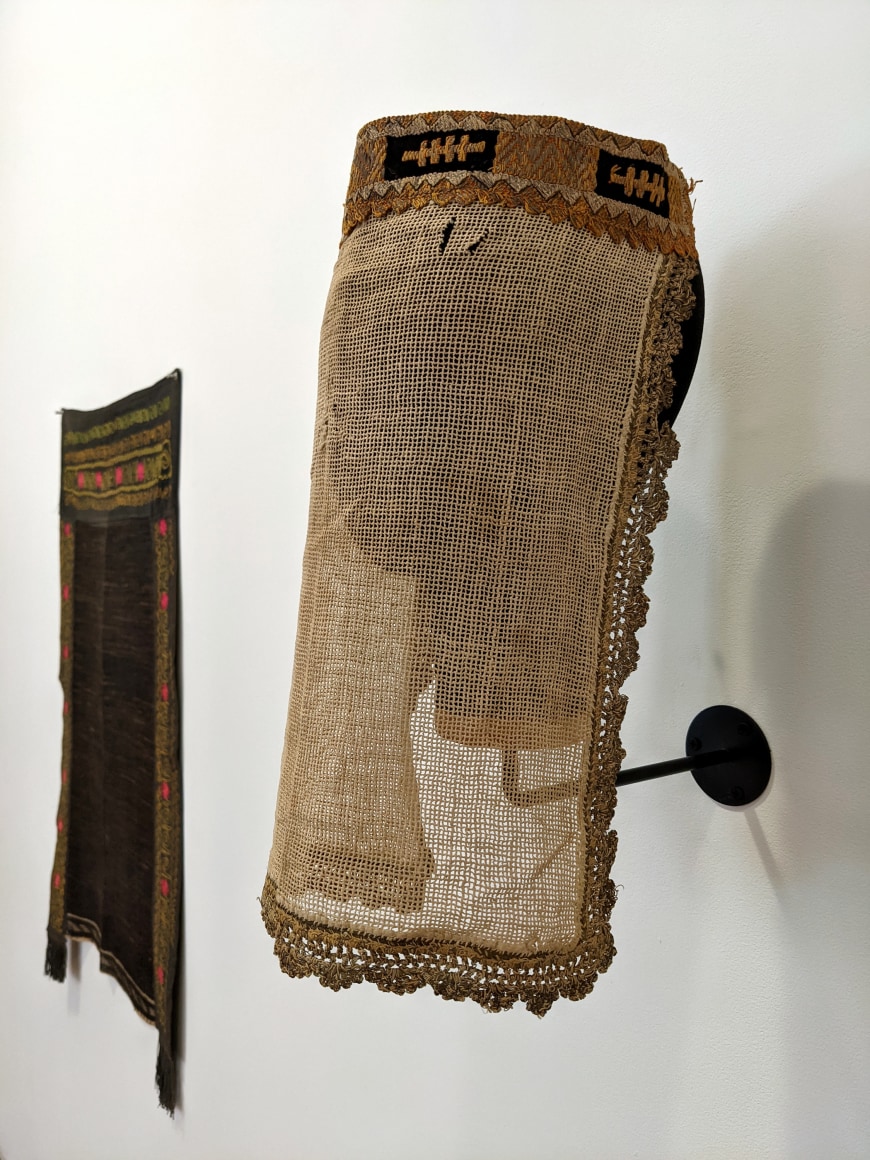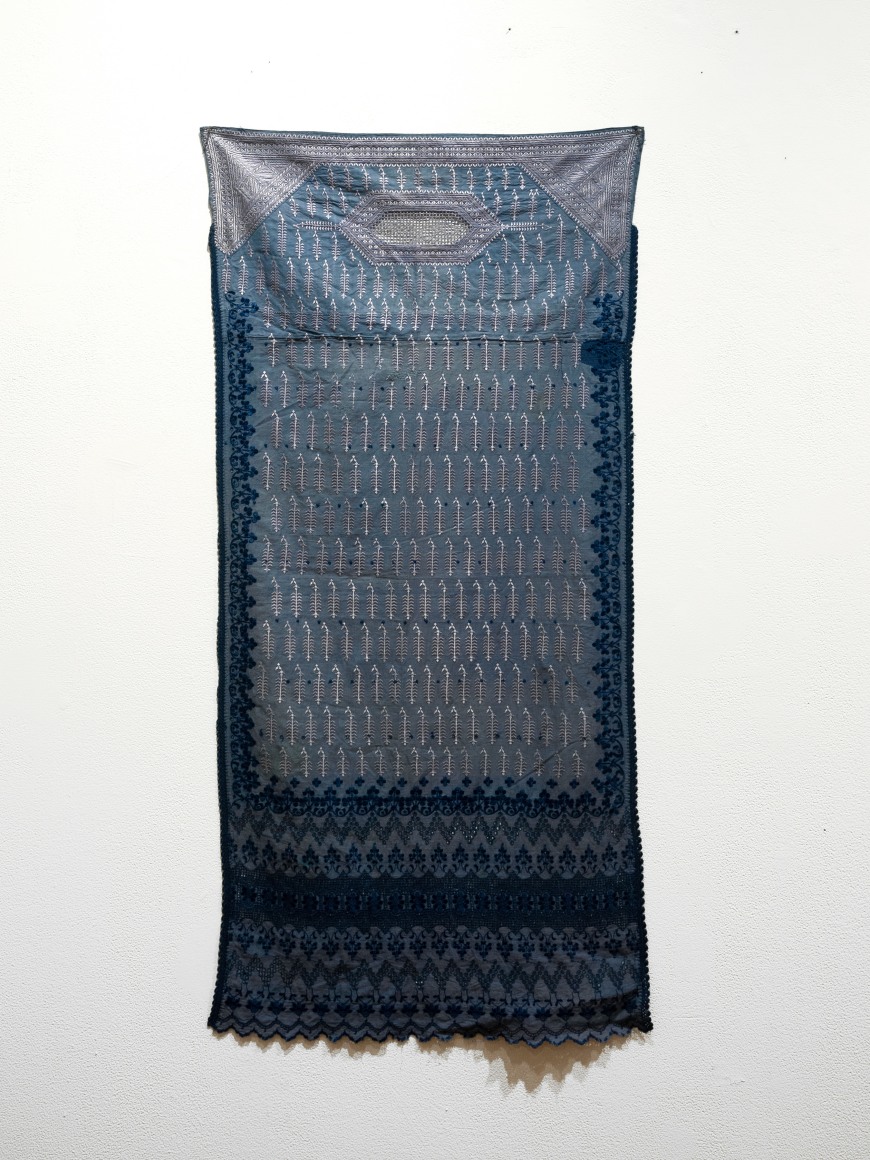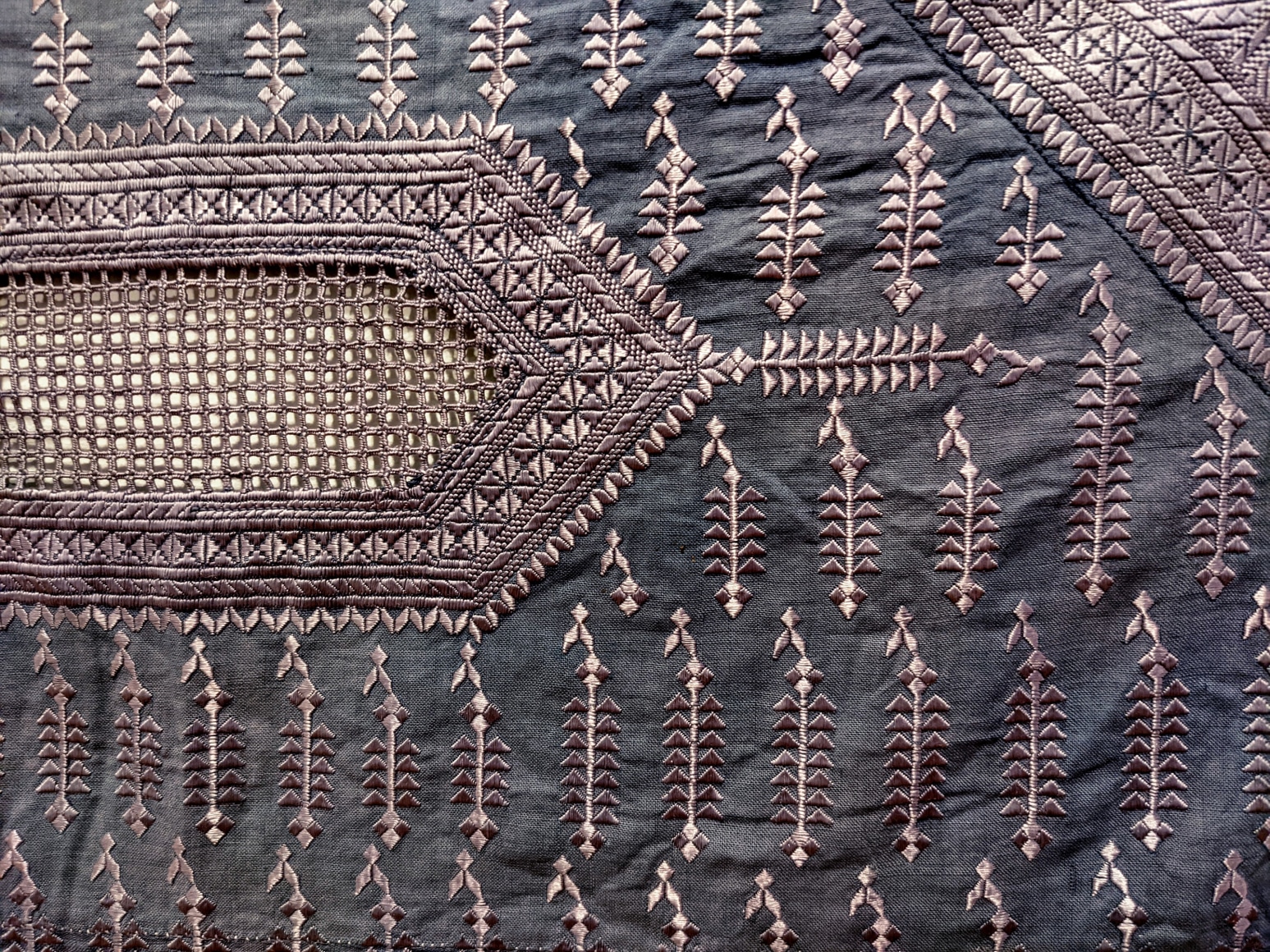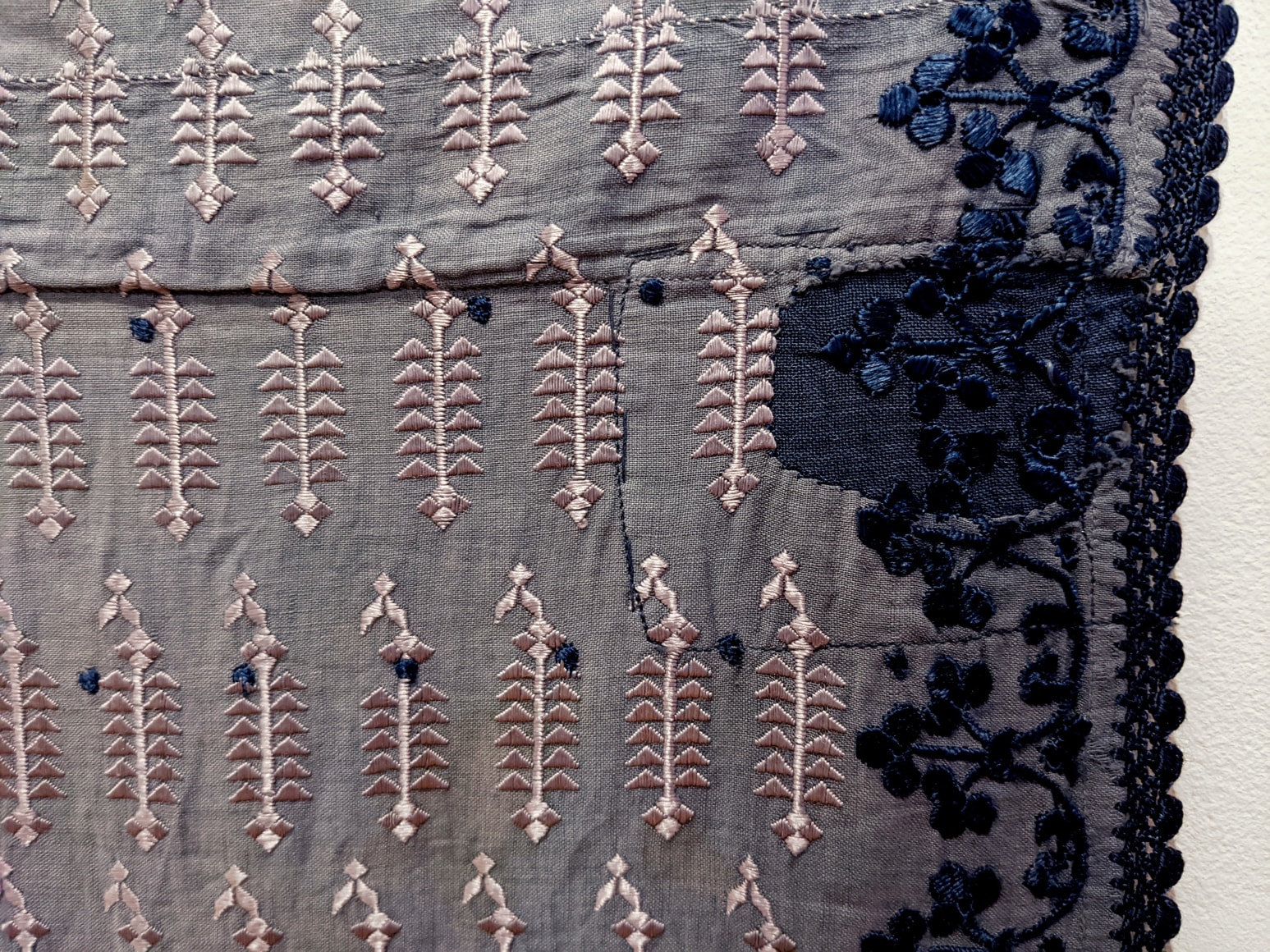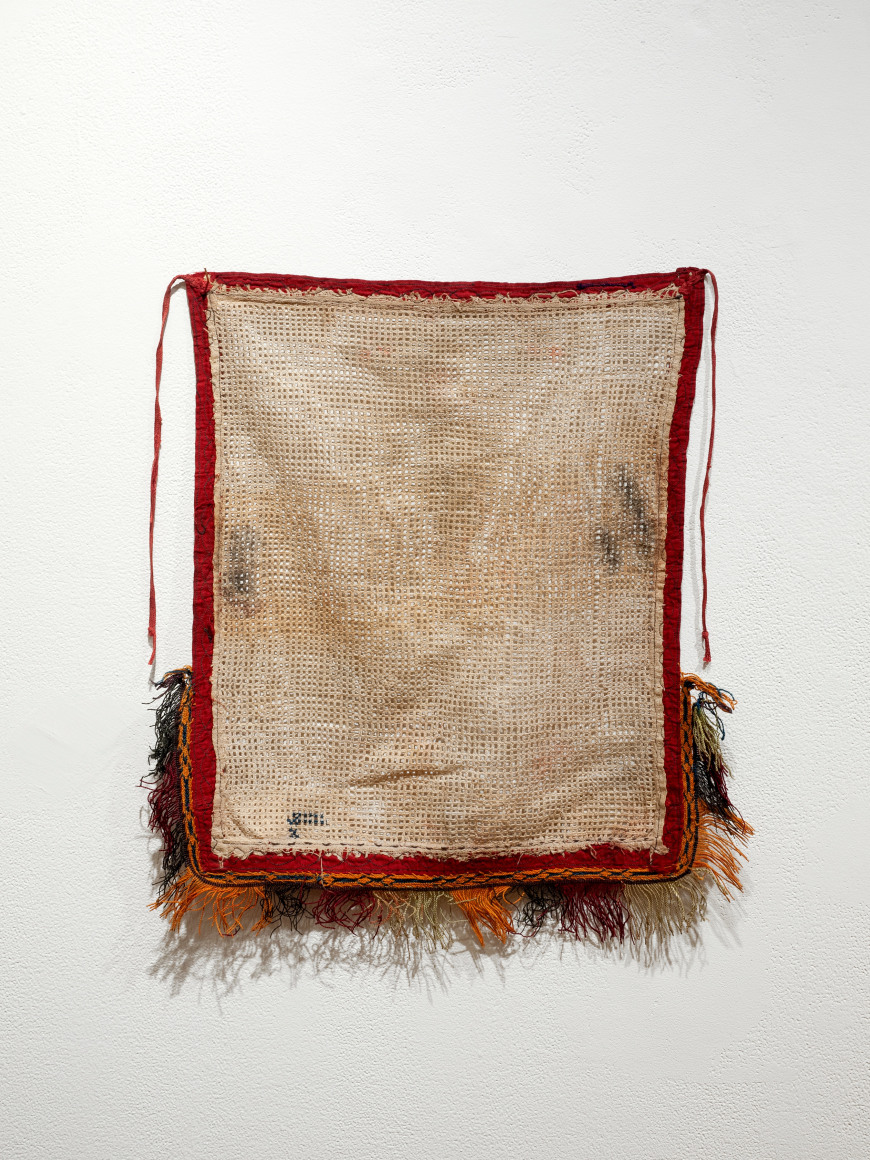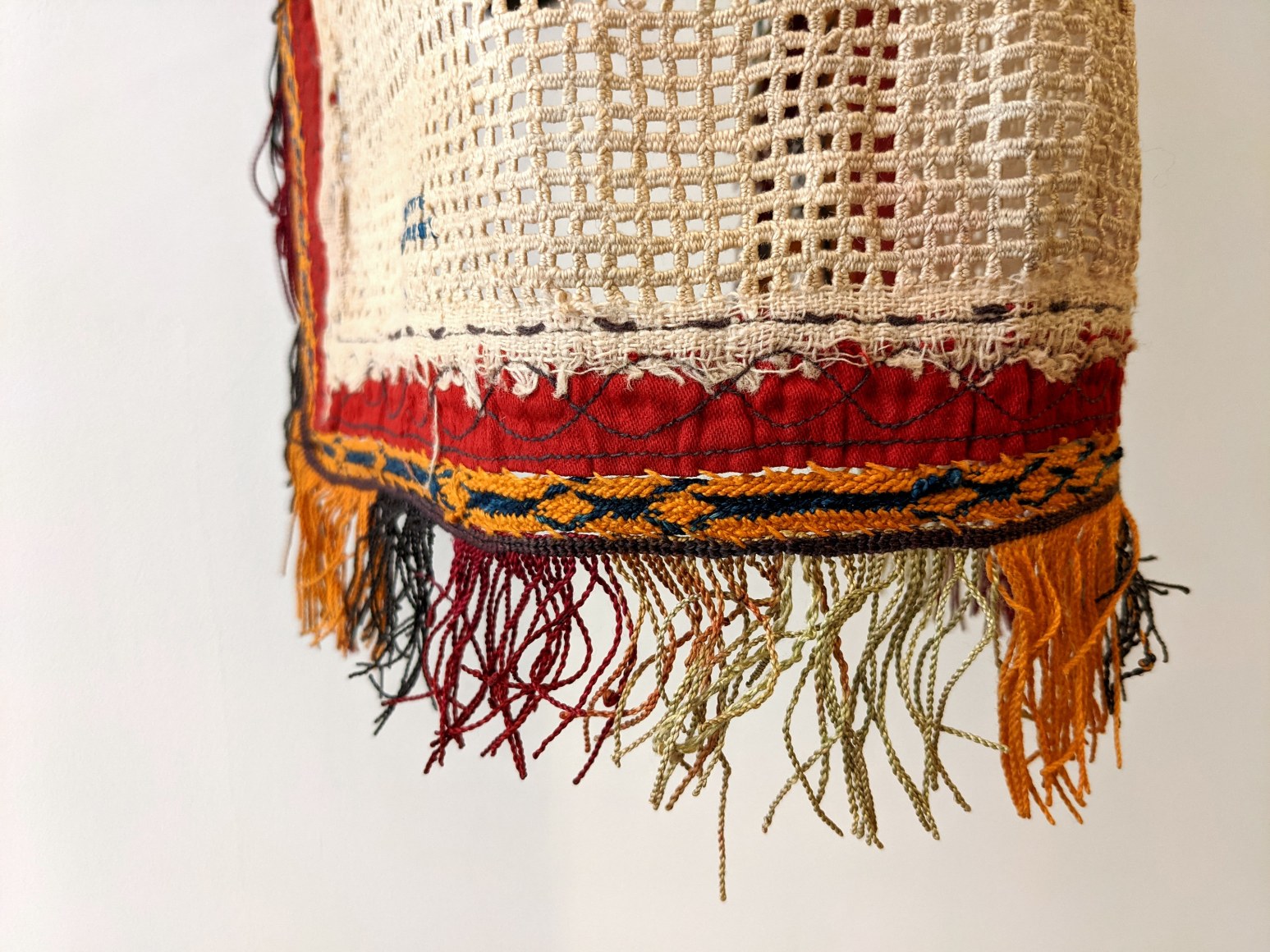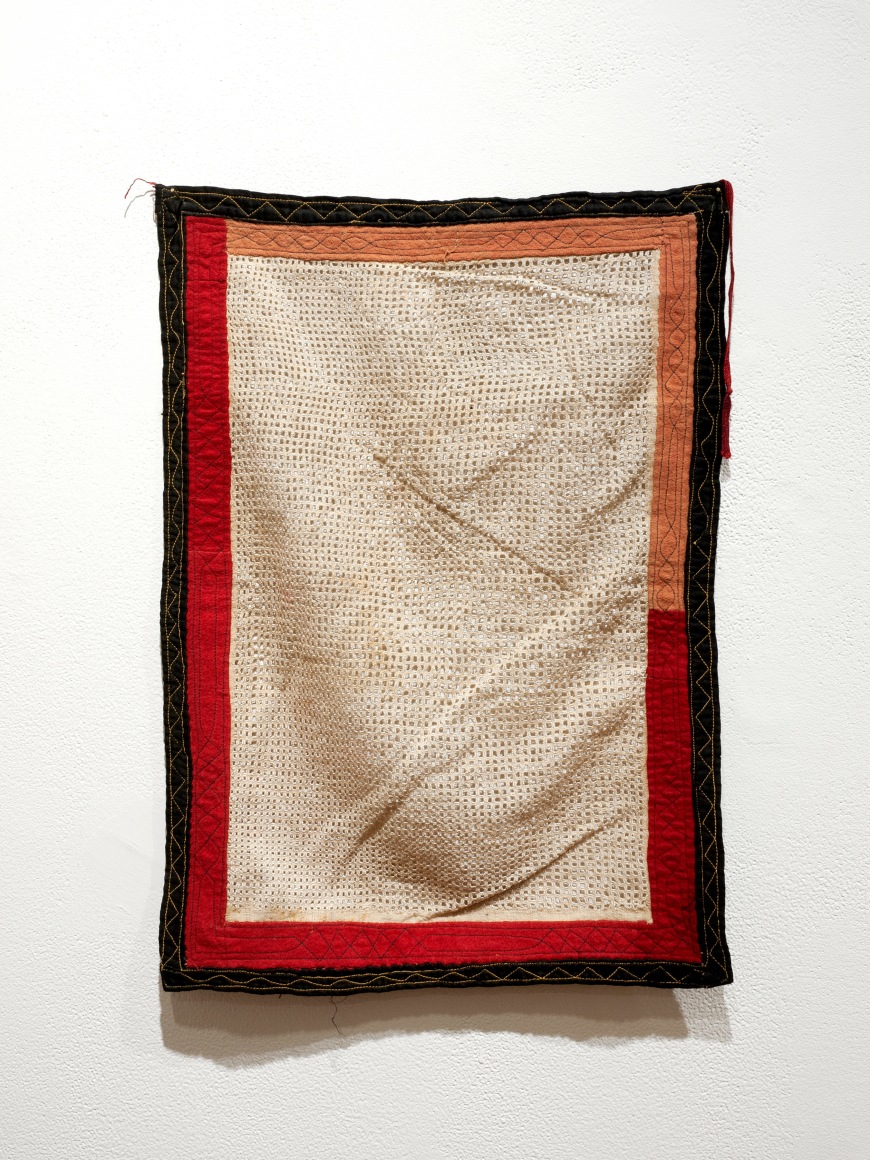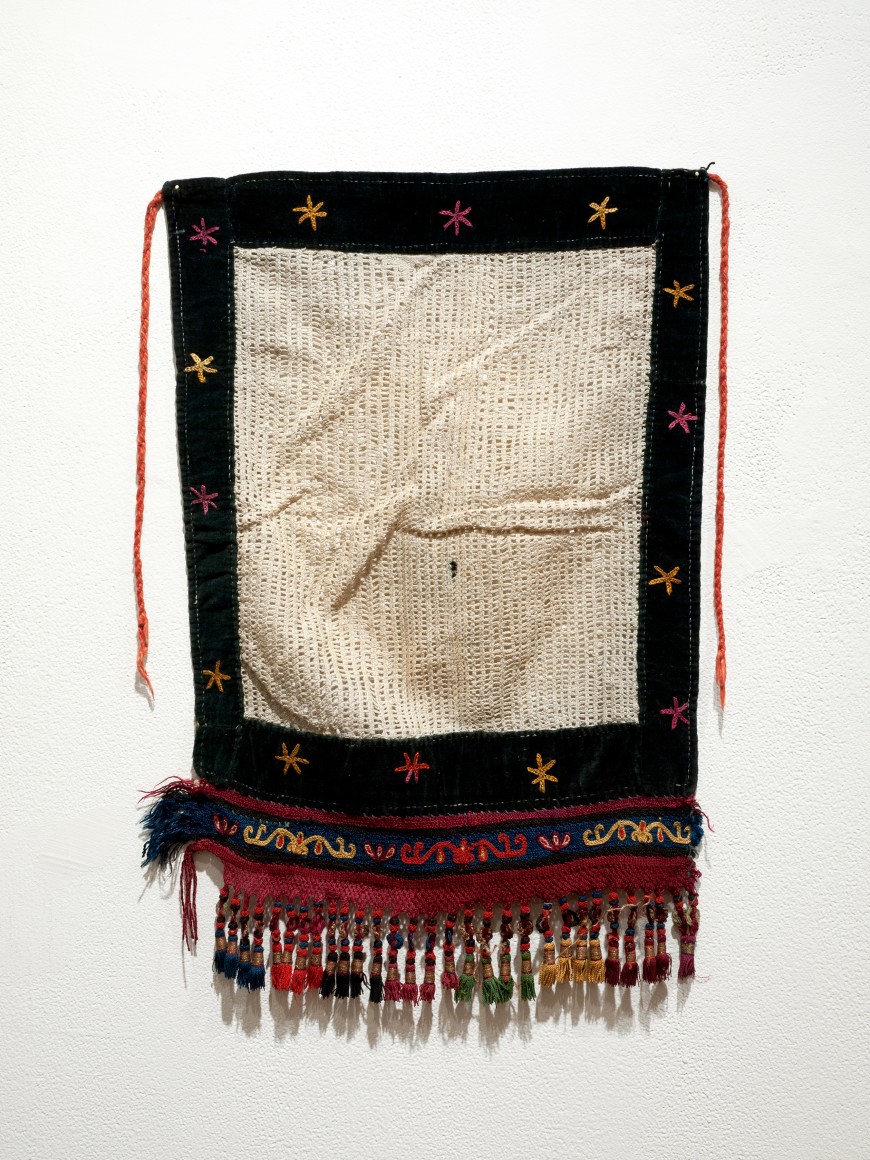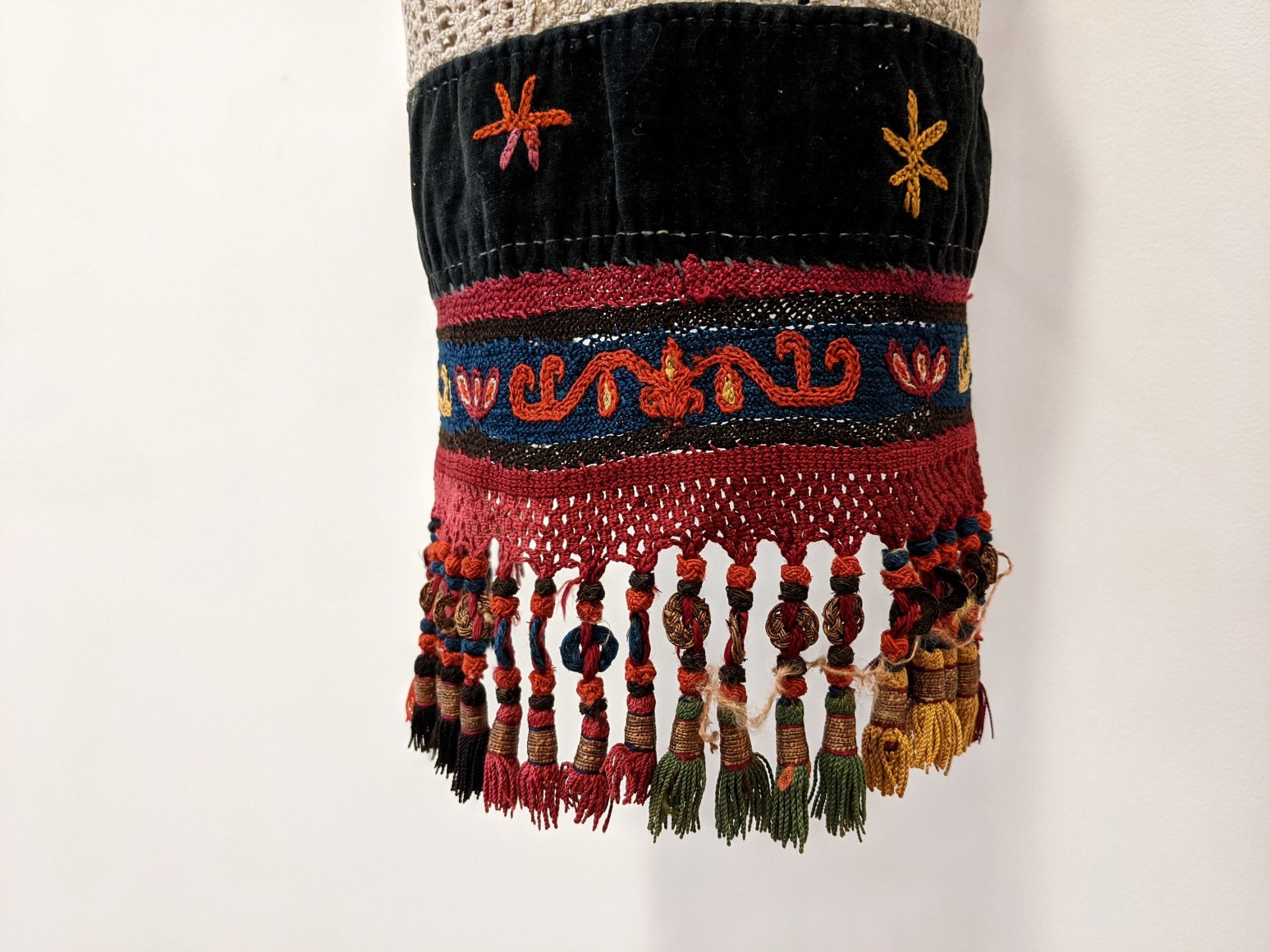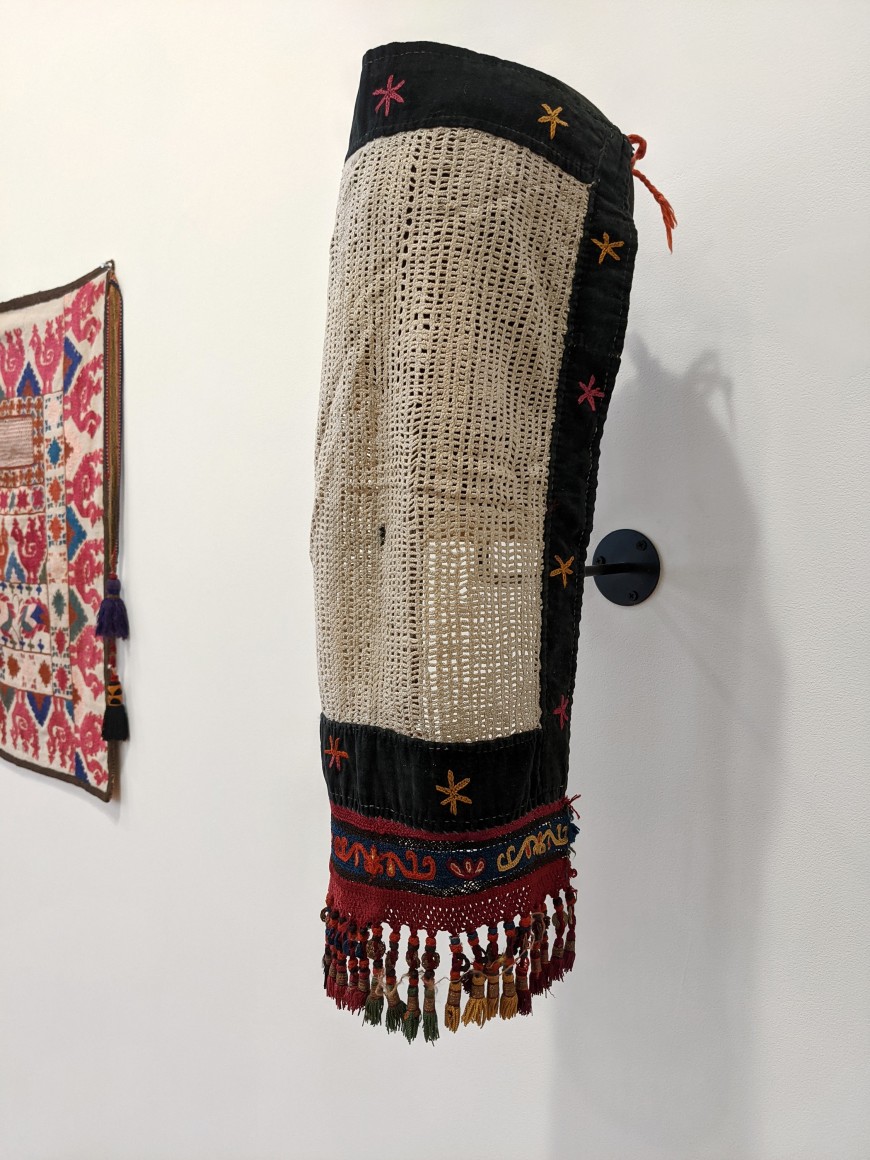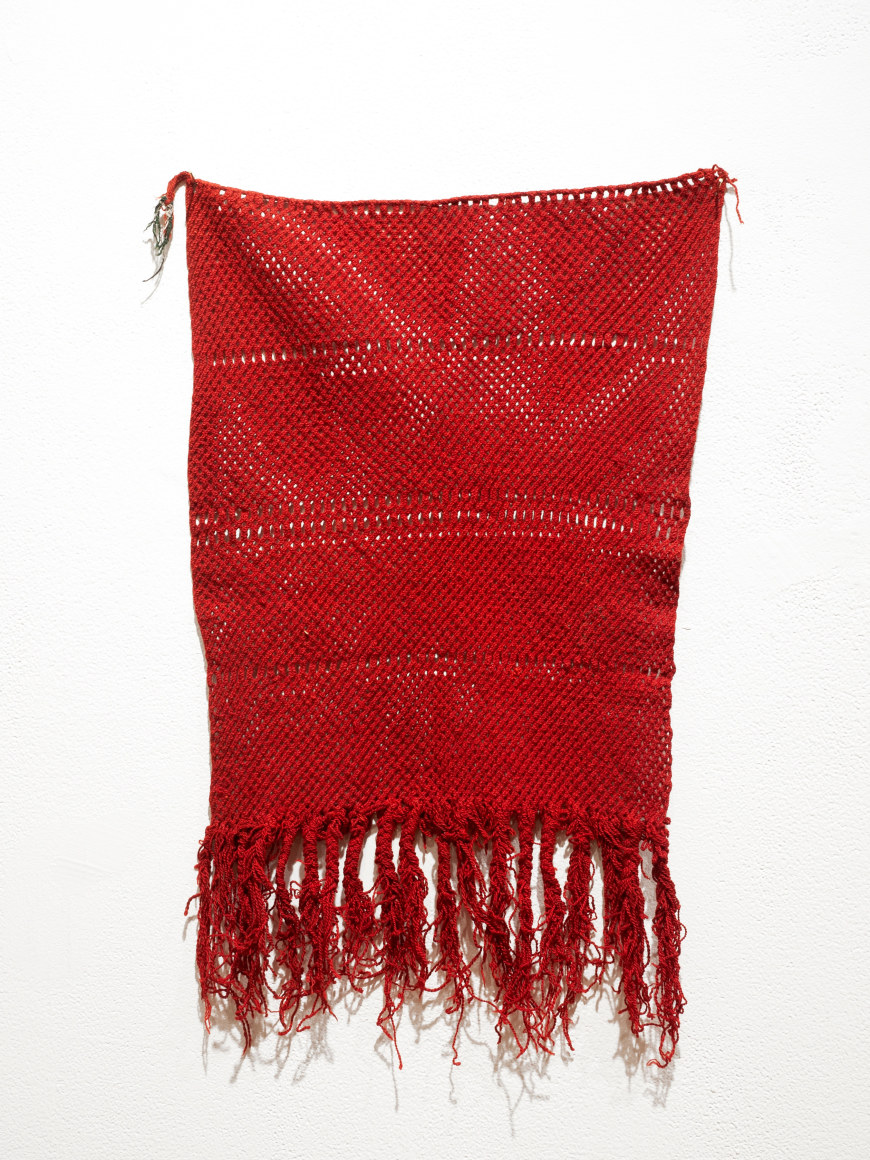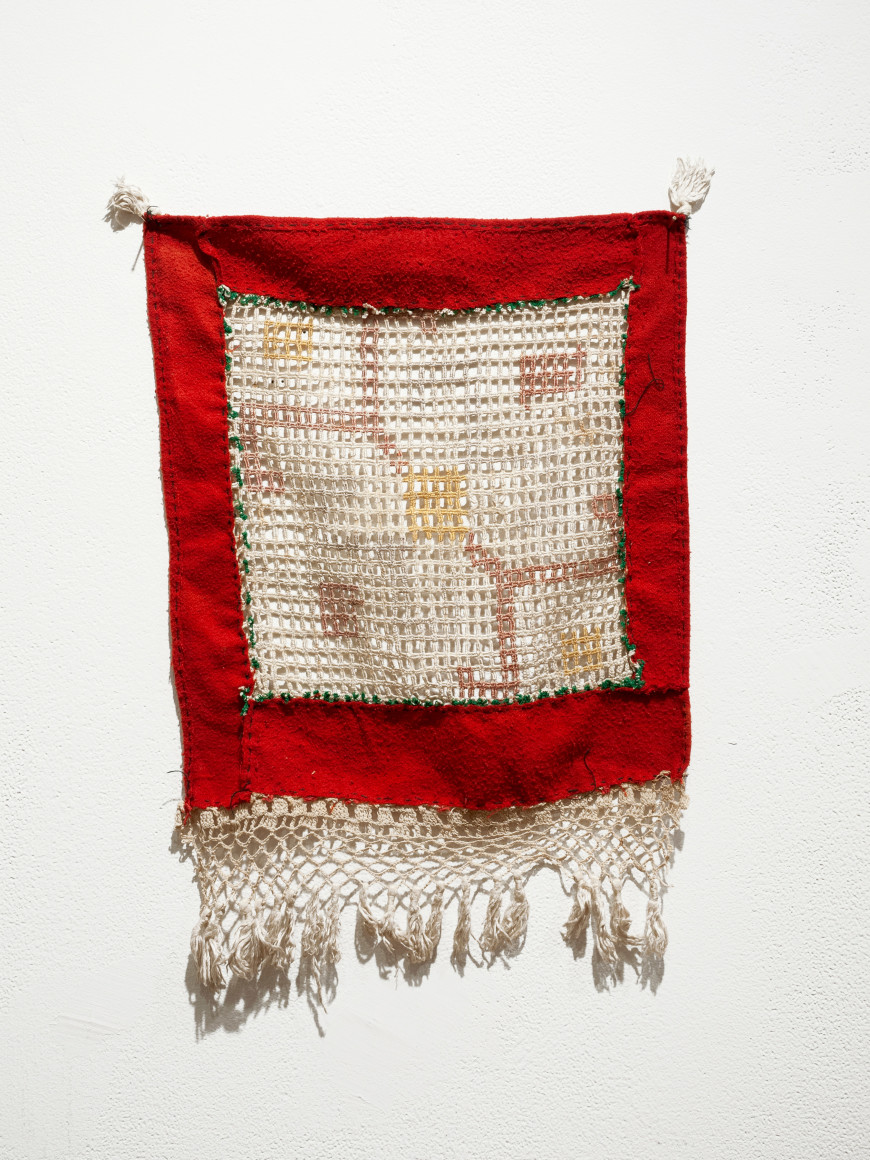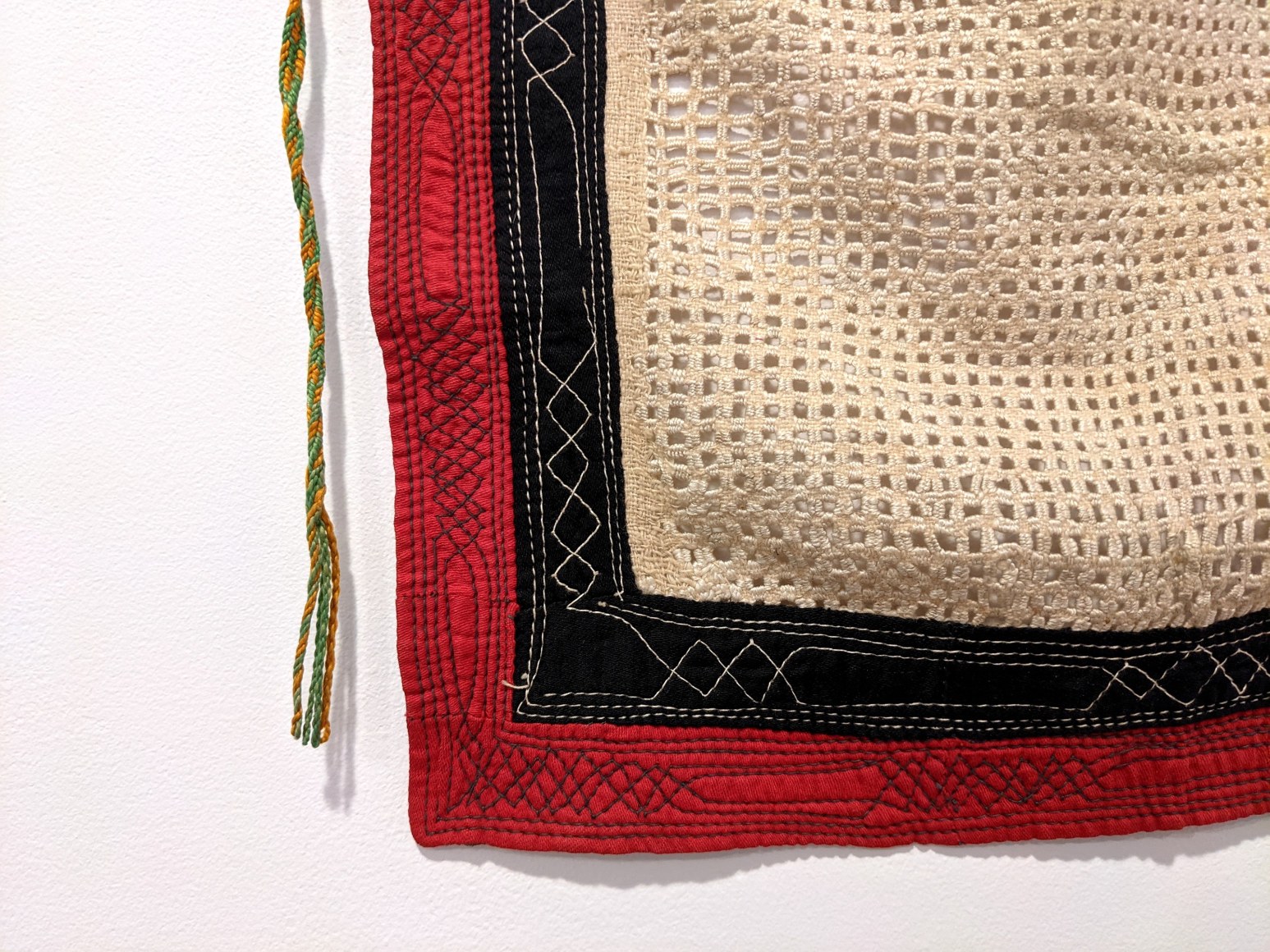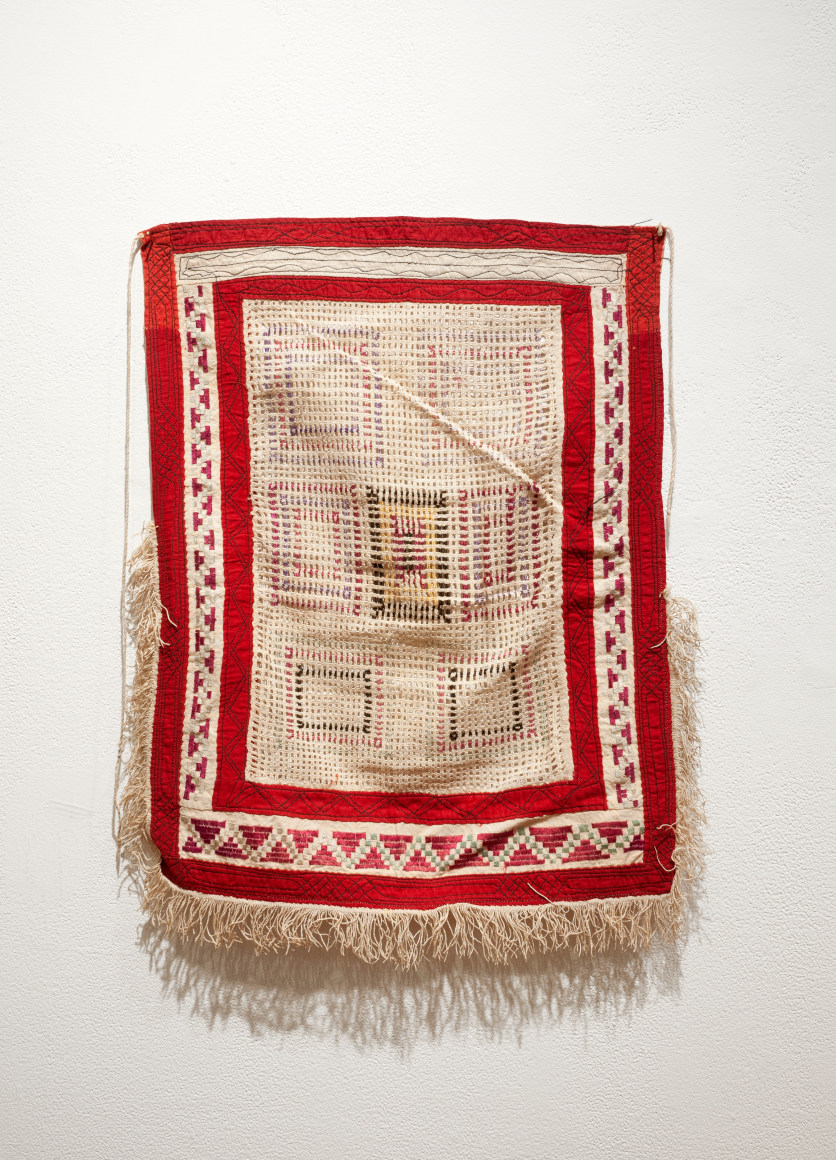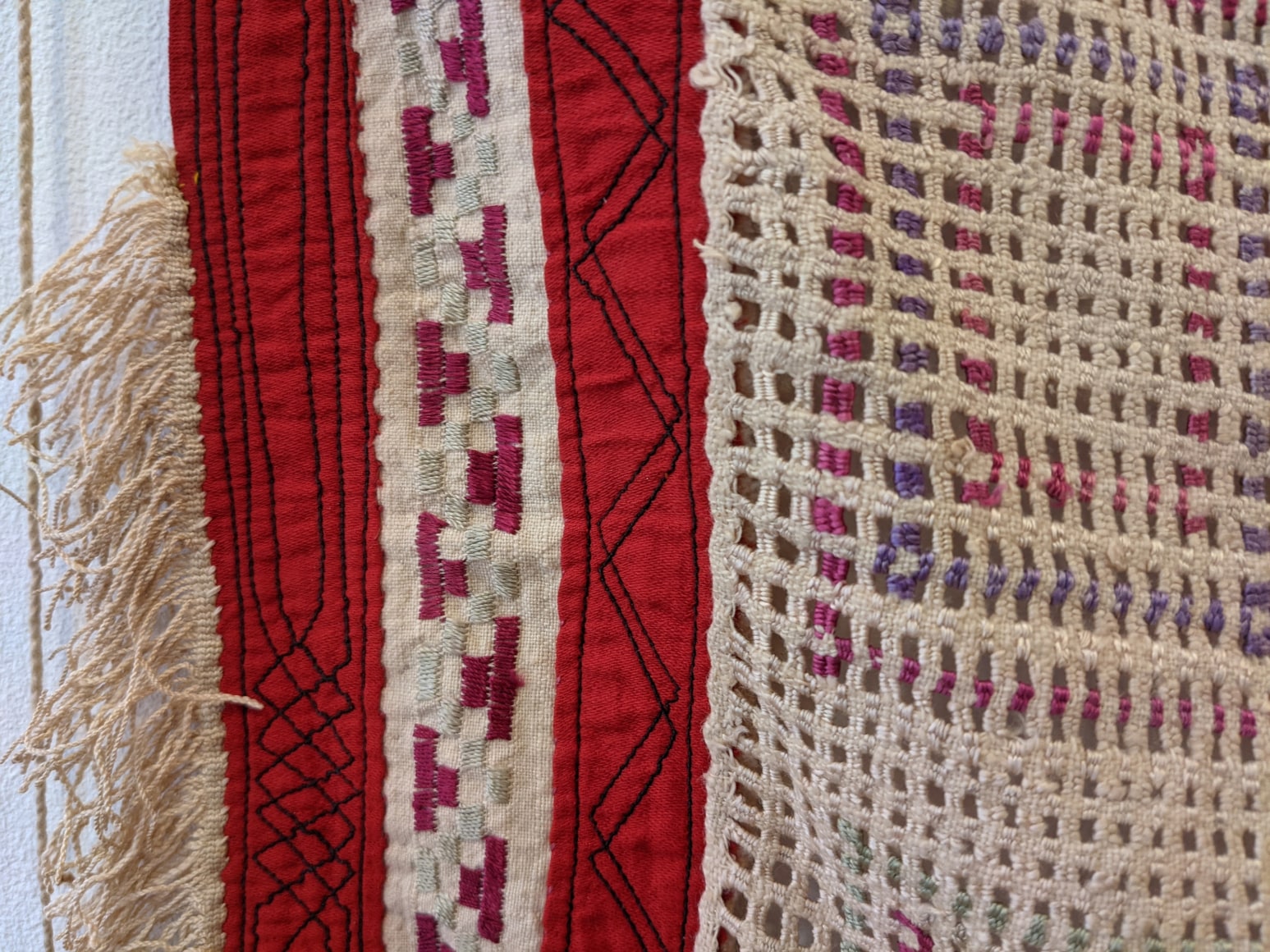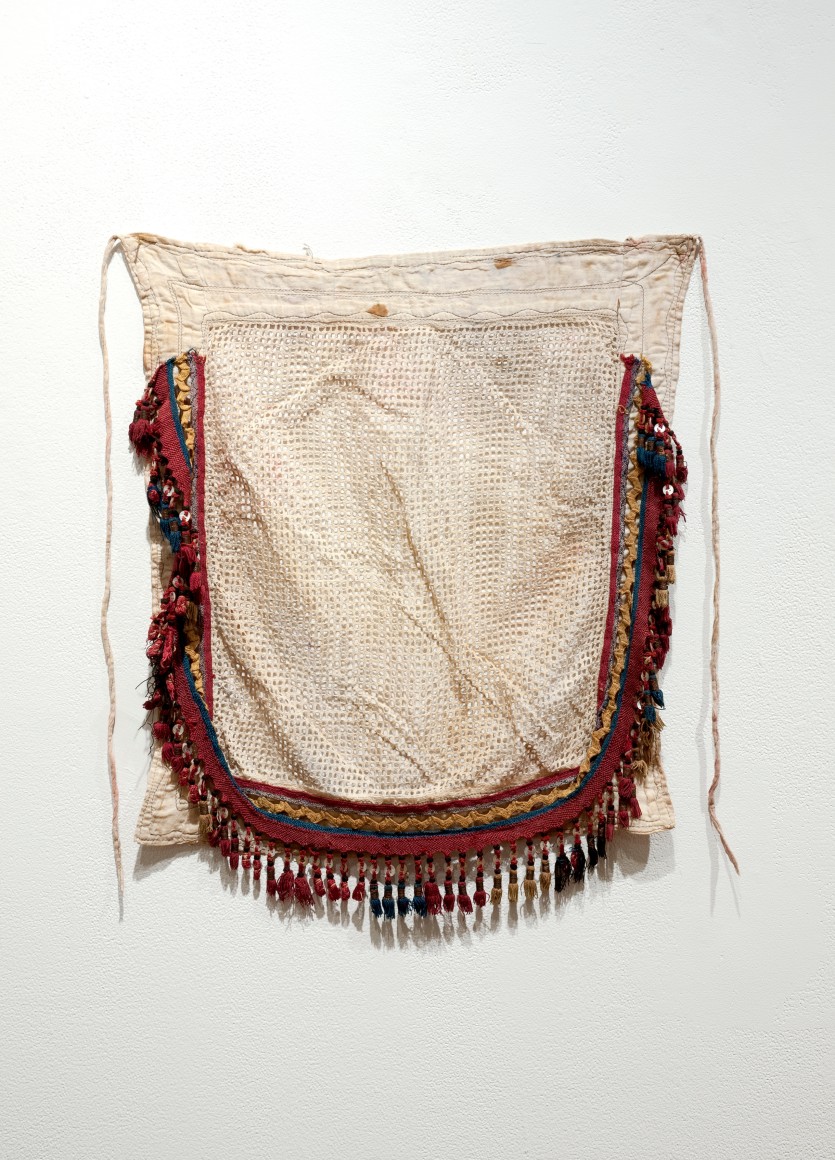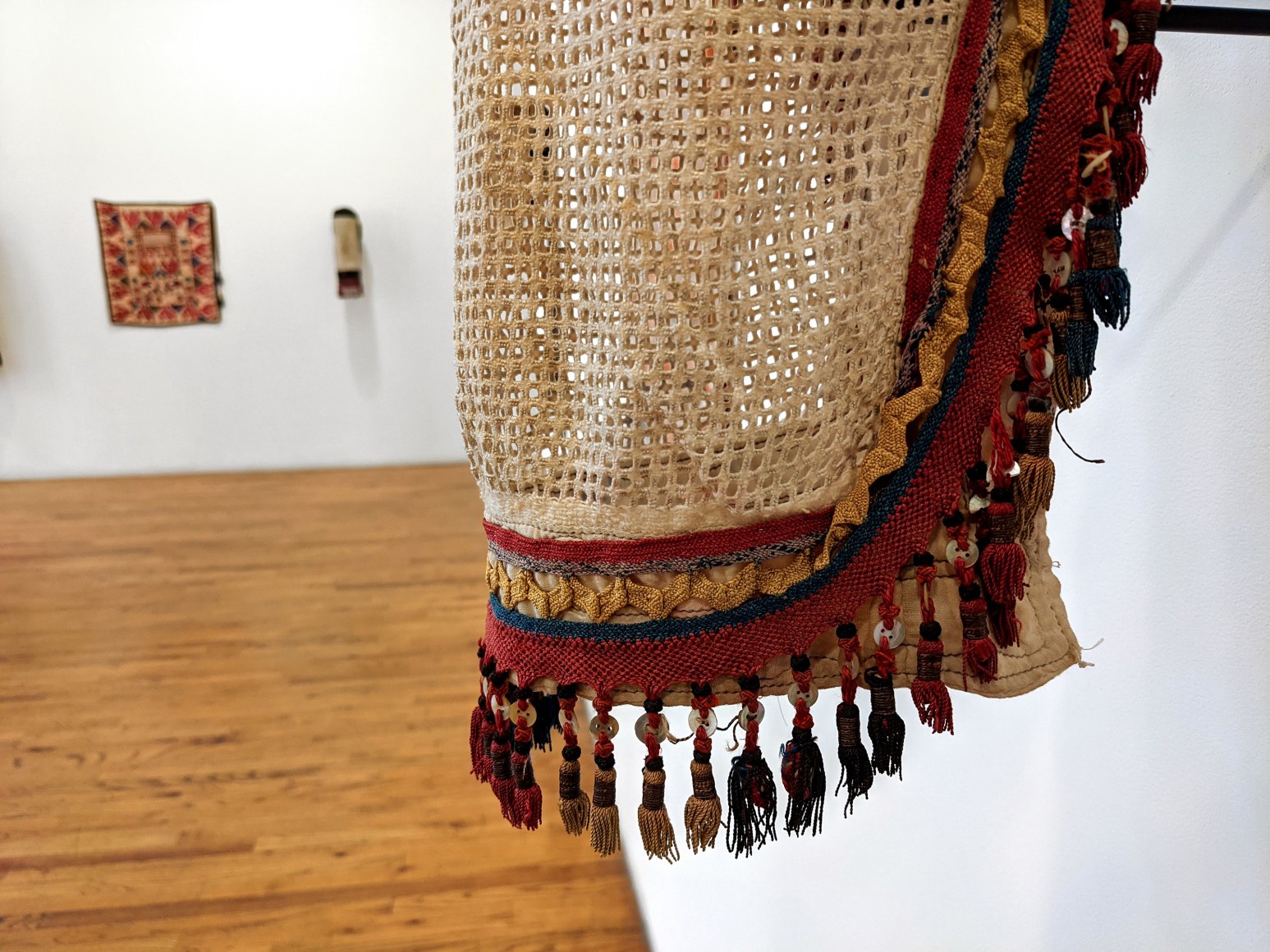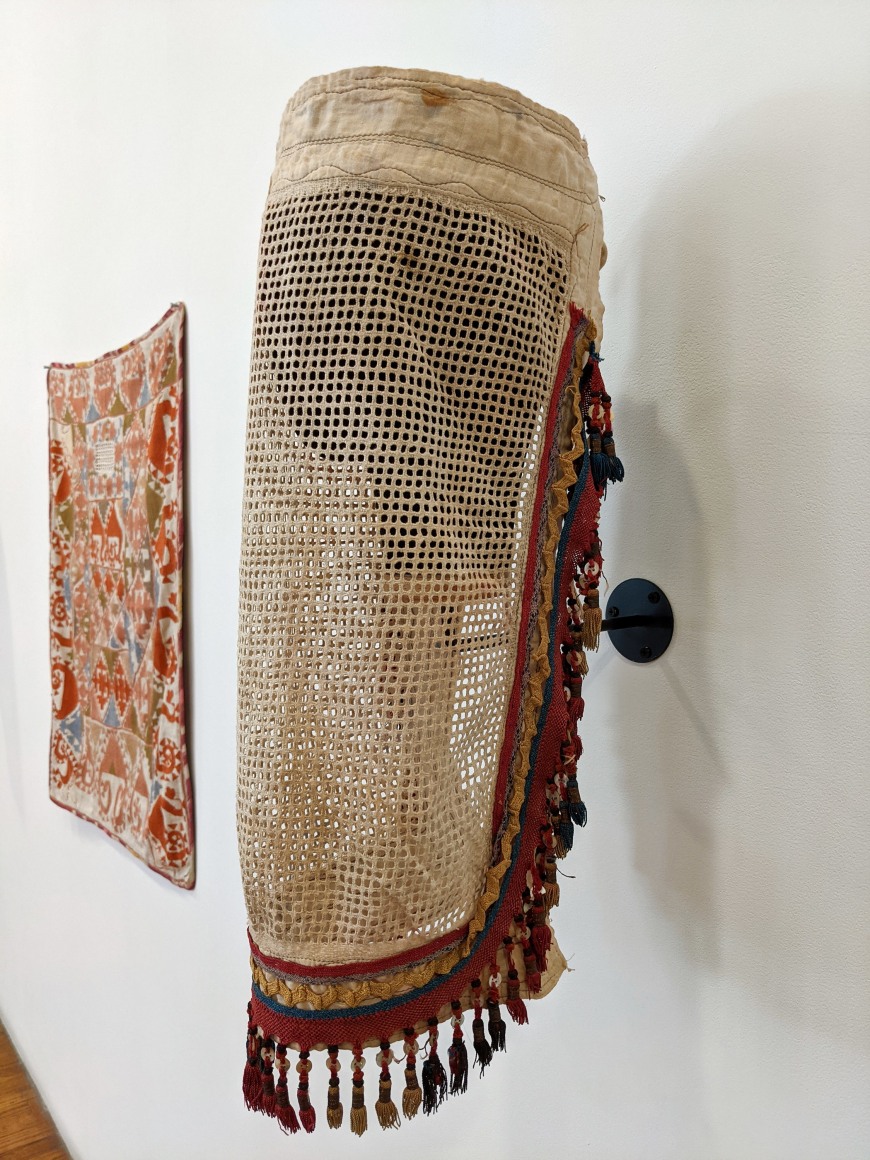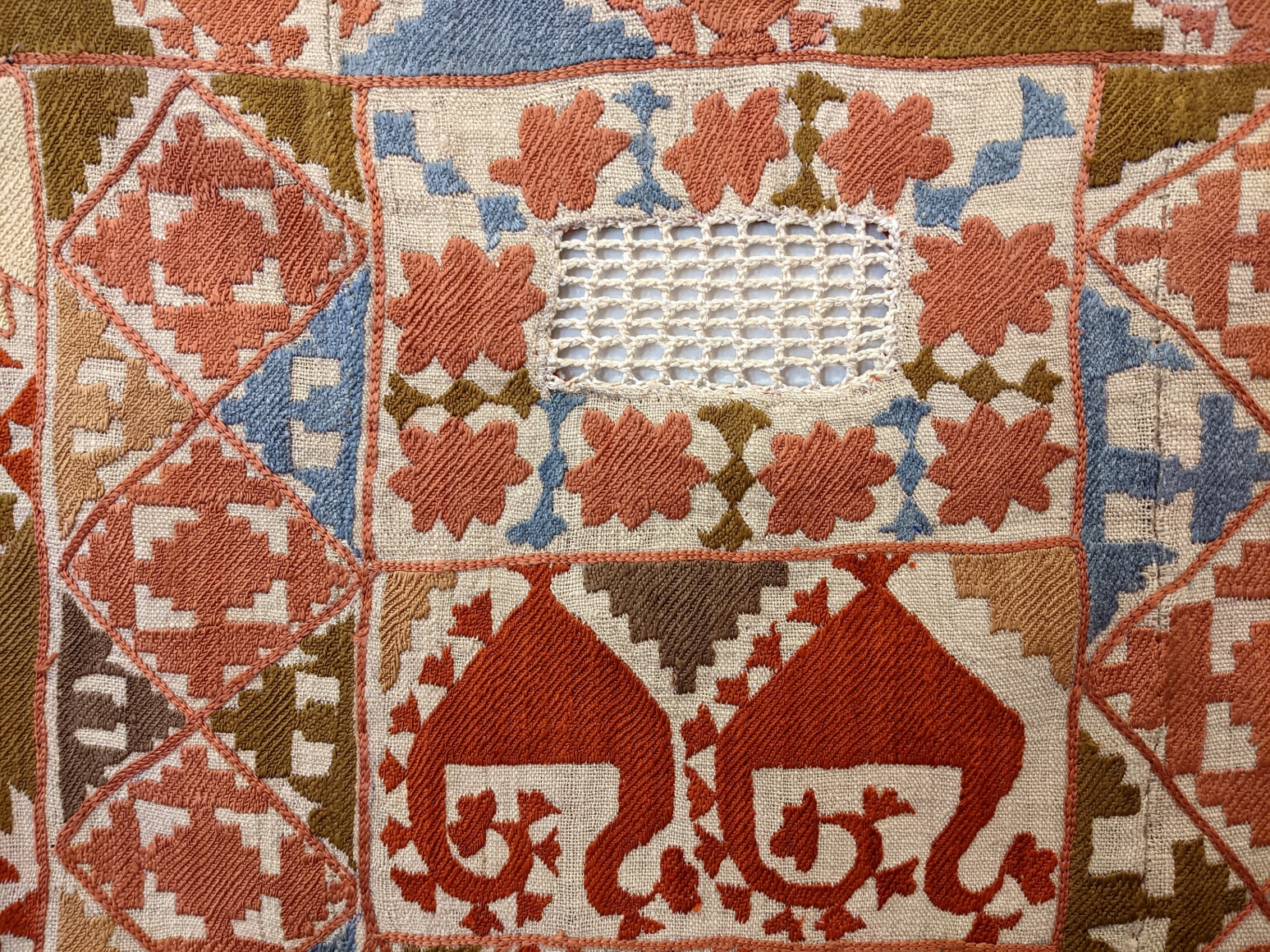Owen James Gallery is pleased to be able to present a private collection of Islamic veils from Central Asia. Dating to the Mid-20th Century, the veils offer a unique insight into the craft traditions, history and culture of the region. The veils originate mostly from Uzbekistan, where their long history is thought to stretch back to the rule of Tamerlane. Veil types and tendencies, and even usage itself, varied greatly with location and especially social class.
With the invasion and subsequent control of the Soviet Union, many changes to the Uzbek social order were introduced. Among these was the Hujum (“assault”), begun by Stalin as a forced measure of gender equality. Initiated on International Women’s Day in 1927, the Hujum had complicated effects on the region. While women began to see a rise in literacy and other social gains, many people also saw it as cultural imperialism and erasure. Wearing the veil in defiance of the Soviets became a matter of national and religious resistance and pride.
These veils are all handmade, and were considered family heirlooms to be handed down through generations. Each veil is as unique as the woman who made it. They are beautiful examples of the embroidery and needlework traditions of the region. In addition to embroidery and fabric (or horsehair) netting, the veils sometimes include playful and colorful beading, tassels and fringe. Some are quite austere, while others are brilliantly decorative. With their patina of time and use, they are intimate works of art full of life, tradition, family and history. Continually repaired over the years, they also become small patchwork museums of textiles, including fragments of mass-market textiles imported from the Soviet Union.
When Uzbekistan gained independence in 1991, the country allowed a more central role for Islam once again. However, the wearing of religious clothing was banned in 1998. In 2012, the sale of the (now more fashionable) hijab by private vendors was also banned, even though some women continue to wear it as an act of defiance.
This private collection of veils grew over a number of years with the assistance and guidance of the Sun Bow Trading Company. Founded by Saul Barodofsky and a group of fellow specialists in 1977, Sun Bow has sought to bring proper attention to the tribal, nomadic and village textile arts of Central Asia. Over the years Barodofsky and the others have made numerous trips to the region to research and acquire examples directly from the populace. In the U.S. they have created groundbreaking exhibitions, from the hospitality rugs of Turkey to the yurts of Chinese Turkistan. Through ongoing programs of lectures and slide shows they have sought to share their research and explorations, and they have worked to place many pieces into museum collections. Sun Bow continues to advance the study and appreciation of Central Asian textile arts.

